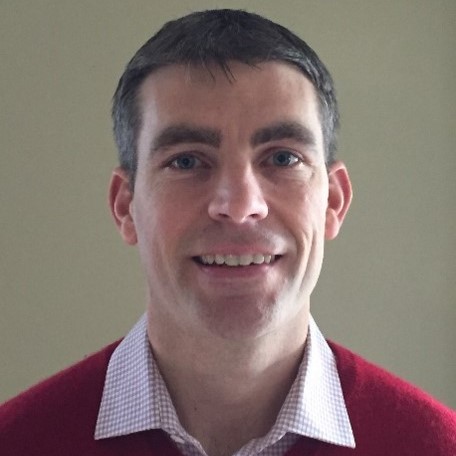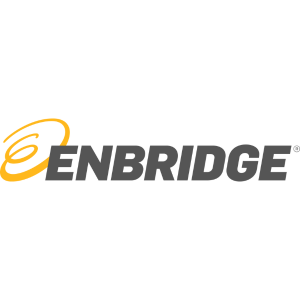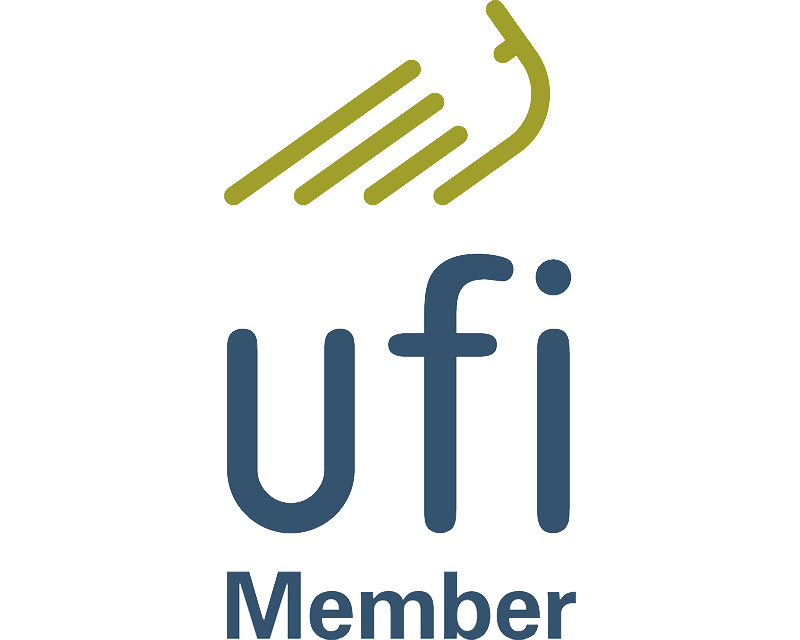- 10 30 AM
Current Status of Non-metallic Materials for CO2 Transport Pipeline
With increasing need for sequestering CO2 captured from point sources there is urgent requirement for CO2 pipeline networks. Several organizations are rapidly establishing carbon management busines...
Sponsored by : Worley
 Worley Knowledge Bar
Worley Knowledge Bar 10:30 AM - 11:30 AM
10:30 AM - 11:30 AM
Current Status of Non-metallic Materials for CO2 Transport Pipeline
 10:30 AM - 11:30 AM
10:30 AM - 11:30 AM Worley Knowledge Bar
Worley Knowledge Bar
With increasing need for sequestering CO2 captured from point sources there is urgent requirement for CO2 pipeline networks. Several organizations are rapidly establishing carbon management business to tap into the increasing demand for a CO2 transport infrastructure. Industry data supports pipelines as the proven most efficient means of transporting CO2. The key elements of the CO2 transport network includes trunk line CO2 pipeline along with the lateral lines connecting the emission sources to the storage wells. The CO2 transport in pipelines throws a challenge for engineers, operators, vendors and contractors as these are new kind of facilities, sometimes first of its kind, with new technologies that deal with new materials, scale-up, safety / technical challenges and different types of equipment and different operating guidelines. CO2 transport using conventional carbon steel poses material integrity and cost risks. Combined with lack of long term commercially proven specifications and standards, the industry is seeking alternative materials for CO2 pipeline. This paper presents the current status of the non-metallic materials available in the market as potential alternative to carbon steel for commercial scale CO2 pipeline network in both onshore and offshore environment. Continuous improvements and evolving best practices are critical for a feasible and a fit for purpose practical pipeline system operation. Early appreciation and resolution of the challenges are essential to mitigate the risks and provide cost effective solutions before the industry can make the financial investment decisions to adopt non-metallics as viable option to carbon steel. Bringing industry stakeholders and experts together early in the design phase; optimizing and making right assumptions feeds into risk assessment; establishing minimum viable product ensures feasible commercial cost; selecting the right material, construction and operations guidelines avoids supply chain and misfit system design.

- 10 30 AM
Carbon Capture, Utilization and Storage in Alberta: Overview of Regulations
The first half of the session will provide an overview of carbon capture and sequestration (CCS), delving into the technical subsurface considerations essential for success. We will also discuss th...
Sponsored by : Enbridge
 Enbridge Knowledge Bar
Enbridge Knowledge Bar 10:30 AM - 11:30 AM
10:30 AM - 11:30 AM
Carbon Capture, Utilization and Storage in Alberta: Overview of Regulations
 10:30 AM - 11:30 AM
10:30 AM - 11:30 AM Enbridge Knowledge Bar
Enbridge Knowledge Bar
The first half of the session will provide an overview of carbon capture and sequestration (CCS), delving into the technical subsurface considerations essential for success. We will also discuss the development progress at the Wabamun Hub, highlighting its role in advancing CCS in Alberta and Canada. The second half of the session will feature an overview on the history of carbon capture utilization, and storage (CCUS) in Alberta, CCUS regulatory framework in Alberta, AER’s regulatory instruments and requirements, and the role of Monitoring, Measurement and Verification Plan. The presentation will also highlight other active projects and carbon sequestration activities in Alberta. This session is designed for anyone interested in the future of carbon sequestration project development.


- 10 30 AM
Integrated Assessment of Decarbonization Pathways
The presentation will cover development of a novel framework for integrated assessment of baskets of technology options for greenhouse gas mitigation in the emission intensive sectors. Few case stu...
Sponsored by : Pathways Alliance
 Pathways Alliance Knowledge Bar
Pathways Alliance Knowledge Bar 10:30 AM - 11:30 AM
10:30 AM - 11:30 AM
Integrated Assessment of Decarbonization Pathways
 10:30 AM - 11:30 AM
10:30 AM - 11:30 AM Pathways Alliance Knowledge Bar
Pathways Alliance Knowledge Bar
The presentation will cover development of a novel framework for integrated assessment of baskets of technology options for greenhouse gas mitigation in the emission intensive sectors. Few case studies will be discussed along with the greenhouse gas mitigation potential and the associated costs.

- 10 30 AM
A Practical Guide for the Selection of CO2 Dehydration Technology Based on Intake and Offtake Conditions for Carbon Capture and Storage
Objectives/Scope This paper aims to provide a practical guide for carbon capture projects to assess dehydration technology for their specific intake and offtake requirements, considering moisture a...
Sponsored by : Capital Power
 Capital Power Knowledge Bar
Capital Power Knowledge Bar 10:30 AM - 11:30 AM
10:30 AM - 11:30 AM
A Practical Guide for the Selection of CO2 Dehydration Technology Based on Intake and Offtake Conditions for Carbon Capture and Storage
 10:30 AM - 11:30 AM
10:30 AM - 11:30 AM Capital Power Knowledge Bar
Capital Power Knowledge Bar
Objectives/Scope This paper aims to provide a practical guide for carbon capture projects to assess dehydration technology for their specific intake and offtake requirements, considering moisture and other gas impurities they are likely to encounter with the potential for multiple CO2 point sources comingled in a HUB. Methods, Procedures, Process: Normalized gas compositions from projects, studies, and literature will be summarized for a general reference to intake and offtake expectations. Offtake specifications will be summarized by transport method and regional expectations to provide a global overview of the expected CO2 stream compositions. An overview of dehydration technologies will be provided, along with key points for consideration when selecting specific technology for use. As a summary to guide selection, these aspects will be placed in tables and logic diagrams for a useful and practical guide in the selection of CO2 dehydration technology. Results, Observations, Conclusions: The primary reason for CO2 dehydration is to remove water to safeguard pipelines against corrosion and prepare the gas stream for use or storage.¬¬ Intake quality of CO2 and the offtake expectations will result in the selection of different CO2 dehydration technologies for projects. In some cases, capital and operating costs can be used as the main consideration. In other cases, impurities in the intake and offtake limitations can be the main drivers for the selection of the technology. There is a wide range of understanding regarding the capabilities of CO2 dehydration technology, which can result in suboptimal technology selection. By selecting the proper technology for CO2 dehydration, projects can streamline focus from the start with surrounding processes. Novel/Additive Information: This paper will emphasize differences in captured CO2 intake quality and offtake specifications within current carbon capture and storage projects. By doing so, it aims to provide a practical guide for selecting dehydration technology. The presentation will explore each technology's benefits and limitations and rough cost comparisons. This comprehensive approach will assist users in assessing their project needs more concisely and making more informed decisions regarding dehydration technology.

- 11 30 AM
Theseus 24D Minimal Environmental Disturbance and Capital Seismic MMV Method
We present an innovative new method of performing the seismic elements of monitoring, measurement and verification (MMV) for onshore carbon capture and storage projects (CCS). Theseus can reduce ca...
Sponsored by : Worley
 Worley Knowledge Bar
Worley Knowledge Bar 11:30 AM - 12:30 PM
11:30 AM - 12:30 PM
Theseus 24D Minimal Environmental Disturbance and Capital Seismic MMV Method
 11:30 AM - 12:30 PM
11:30 AM - 12:30 PM Worley Knowledge Bar
Worley Knowledge Bar
We present an innovative new method of performing the seismic elements of monitoring, measurement and verification (MMV) for onshore carbon capture and storage projects (CCS). Theseus can reduce capital savings by as much as 57% and environmental disturbances at project closure by as much as 96%, and it does this while still satisfying the needs of MMV and providing continuous seismic coverage. We do this by combining a series of ideas, including: the Ship of Theseus thought experiment, modifying imaging areas for both 2D and 3D seismic, being realistic about the needs and methods of MMV for onshore CCS projects, integrating 2D and 3D seismic operations, and using seismic wavefield reconstruction techniques in a new way. We walk through the thinking of Theseus by first examining the physics and methods of seismic MMV for CCS. This leads to us redefining imaging areas for the 3D seismic elements of MMV and yields an analytic expression for capital savings that is parameterized by the CO2 plume size and the depth of the storage complex. We next consider how far the Theseus strategy can be taken by laying out a scenario and set of conditions in which repeat 3D seismic is either minimized or eliminated all together. This possibility can only be achieved through a concept called 24D, where wavefield reconstruction techniques are used to create arbitrary 2D baseline datasets from a baseline 3D. The 24D concept is new and requires a 3D design from which such a reconstruction could be successfully carried out. We examine the 3D design aspect of the 24D problem, leading to a series of 3D design candidates. To test the viability of the concept and the 3D design candidates, we build a 3D model and perform a 3D ray tracing seismic simulation. The geological model we use is one of high current relevance, being a generic Basal Cambrian Sand model. The wavefield reconstruction is performed against a control test. The results of the experiment support the feasibility of Theseus 24D and its wavefield reconstruction concept. An unexpected benefit of this process is the discovery of a testing method for pre-existing 3D seismic surveys, which could determine the fitness of such legacy data to act as a baseline 3D survey for CCS MMV. This is significant from several perspectives, including: it could save capital and environmental disturbances further, and it could save the time it takes to shoot, process and interpret a new seismic baseline in the field. Given the amount of existing 3D seismic in Canada—particularly Western Canada—and the need to develop carbon storage in a timely fashion, this is a potentially exciting advantage.
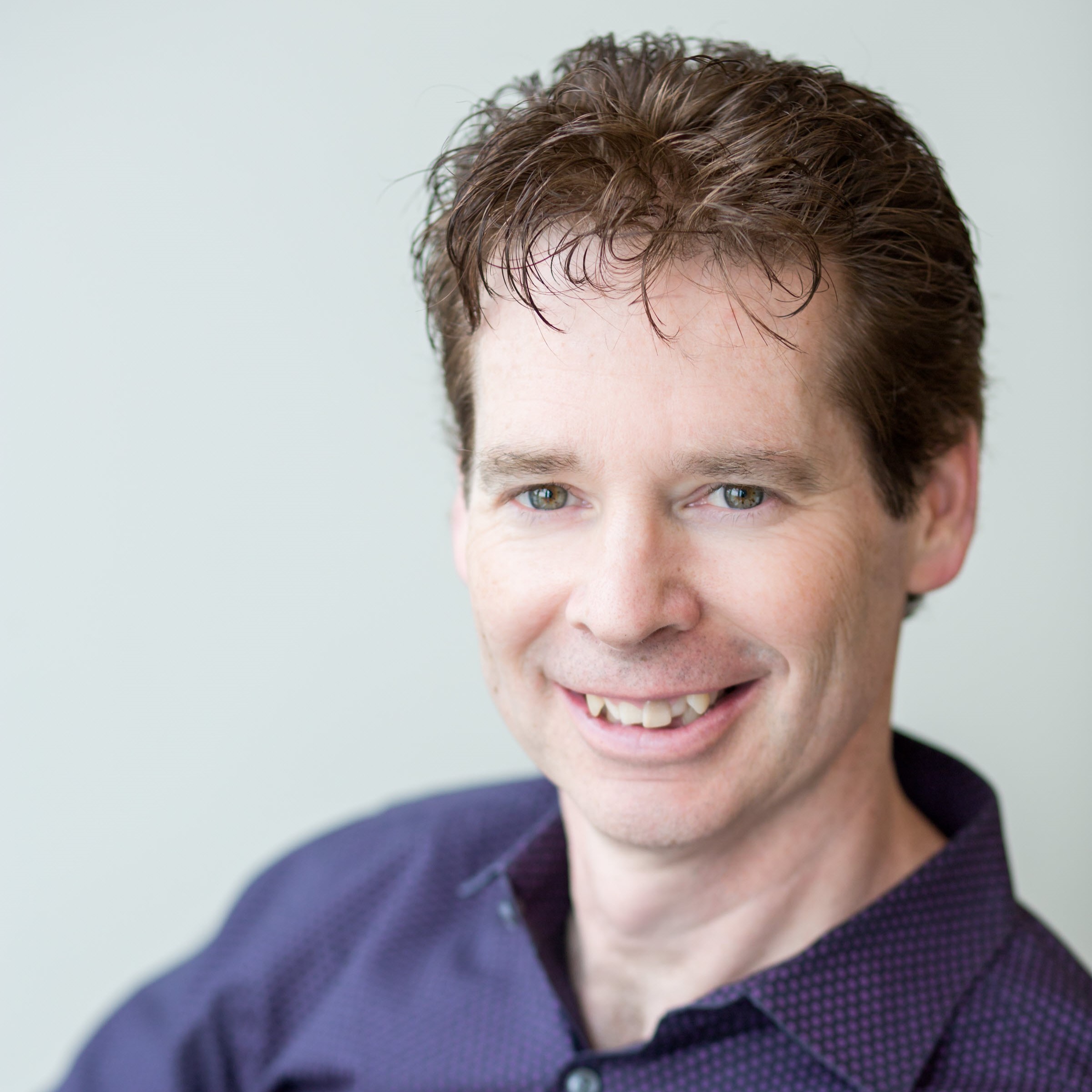
- 11 30 AM
Reinforced Thermoplastic Pipes for CO2 Transportation: CO2 Permeation Through Polyethylene
To achieve the imperative goal of net-zero carbon emissions, projections suggest that a minimum of 1 gigaton of CO2 must be captured and sequestered annually by 2030 [1]. Pipelines are central to t...
Sponsored by : Enbridge
 Enbridge Knowledge Bar
Enbridge Knowledge Bar 11:30 AM - 12:30 PM
11:30 AM - 12:30 PM
Reinforced Thermoplastic Pipes for CO2 Transportation: CO2 Permeation Through Polyethylene
 11:30 AM - 12:30 PM
11:30 AM - 12:30 PM Enbridge Knowledge Bar
Enbridge Knowledge Bar
To achieve the imperative goal of net-zero carbon emissions, projections suggest that a minimum of 1 gigaton of CO2 must be captured and sequestered annually by 2030 [1]. Pipelines are central to this endeavor, serving a critical role by transporting captured CO2 from its sources to storage facilities or end users. However, significant challenges persist concerning materials, including corrosion, degradation, and maintaining the structural integrity of pipeline components. Additional complexities arise from factors such as impurities in CO2 (i.e., if it is wet or dry, sweet or sour) and pressure fluctuations, further complicating the selection of suitable materials for CO2 transport. A primary advantage of reinforced thermoplastic pipe (RTP) is in its diverse installation methods, which can lead to substantial project and lifecycle cost savings up to 30% for typical gas applications. While RTP offer distinct advantages over carbon steel counterparts, including corrosion resistance, improved flow characteristics and thermal insulation, concerns arise regarding the permeation of CO2 through polymeric structures. CO2 can dissolve at high concentrations in polymers and subsequently permeate through the RTP, raising concerns about the overall CO2 emission along the pipeline length and the risk of blistering or structural damage due to rapid gas depressurization (RGD). This study is dedicated to investigating the permeation of CO2 through polyethylene across various phase states, including compressed liquid, gas, and supercritical conditions. The gas transport properties of polyethylene films are evaluated utilizing the closed-volume variable pressure method [2]. Subsequent to the permeation experiments, the films undergo RGD, and their properties are analyzed to assess any resulting damage or degradation. Gas transport characteristics, encompassing permeability, solubility, and diffusivity, are determined using the time-lag method, with a specific focus on understanding the impact of pressure fugacity on permeability coefficients. [1] Prachi Patel, Carbon Storage and Hydrogen: Match Made in Heaven? Make hydrogen from natural gas and store carbon emissions in oil and gas reservoirs, IEEE Spectrum 14 MAR 2023 [2] ASTM D1434-82, Standard Test Method for Determining Gas Permeability Characteristics of Plastic Film and Sheeting, 2016.
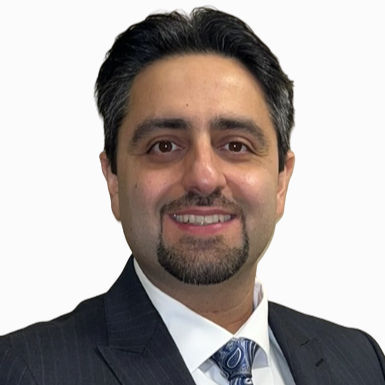
- 11 30 AM
Building Better with Blocks: How to Address Project Complexity and Economics for Modular CCS Solutions?
Final investment decisions and deployment of CCS technologies are lagging net-zero 2030 pledges and commitments, creating cause for concern on the speed and impact of CCS to meet global decarboniza...
Sponsored by : Pathways Alliance
 Pathways Alliance Knowledge Bar
Pathways Alliance Knowledge Bar 11:30 AM - 12:30 PM
11:30 AM - 12:30 PM
Building Better with Blocks: How to Address Project Complexity and Economics for Modular CCS Solutions?
 11:30 AM - 12:30 PM
11:30 AM - 12:30 PM Pathways Alliance Knowledge Bar
Pathways Alliance Knowledge Bar
Final investment decisions and deployment of CCS technologies are lagging net-zero 2030 pledges and commitments, creating cause for concern on the speed and impact of CCS to meet global decarbonization targets. Complexity, costs, and risks are critical factors in assessing the feasibility of a CCS project. While it is challenging to abate these critical factors for large projects and hard-to-abate sectors, select CCS applications that would benefit from a modular design and execution can lead to more rapid deployment and scalability of technologies. A well-designed system integrated into an existing ISBL balance-of-plant system is critical for ensuring the smooth, efficient, and safe operation of a CCS facility. It directly impacts the facility's ability to capture CO2 effectively while keeping operating costs under control. In this presentation, Enerflex will approach some of the design considerations, challenges, and cost drivers through a modular lens for select CCS applications incorporating a) gas conditioning and pre-treatment;b) CO2 separation;c) CO2 purification and compression. Attendees will gain valuable insights into: • Select CCS applications that have benefited from Enerflex’s leading modular approach. • Potential and possible drivers based on learnings and project experience in modular solutions to reduce the project complexity, project risk, and/or lifecycle cost of capture. • Engineering design and execution challenges in different ISBL technology segments for select CCS applications. This presentation is ideal for those interested in the current state-of-the-art in modular solutions CCS , the development of the CCS market, and equipment solutions that comprise elements of balance-of-plant for CO2 capture. Enerflex is a premier integrated global provider of energy infrastructure and energy transition solutions, deploying natural gas, low-carbon, and water treatment solutions – from individual, modularized products and services to integrated custom solutions. With over 4,800 engineers, manufacturers, technicians, and innovators, Enerflex is bound together by a shared vision: Transforming Energy for a Sustainable Future. The Company remains committed to the future of natural gas and the critical role it plays, while focused on sustainability offerings to support the energy transition and growing decarbonization efforts.

- 11 30 AM
From Policy to Profit - The Quest to FID
The past year in CCS has had ups and downs, from royal assent on the ITC and multiple FIDs, to cancellations and uncertainty expressed by major projects. This presentation takes an independent walk...
Sponsored by : Capital Power
 11:30 AM - 12:30 PM
11:30 AM - 12:30 PM
From Policy to Profit - The Quest to FID
 11:30 AM - 12:30 PM
11:30 AM - 12:30 PM
The past year in CCS has had ups and downs, from royal assent on the ITC and multiple FIDs, to cancellations and uncertainty expressed by major projects. This presentation takes an independent walk through the commercial viability and logic driving recent CCS announcements. Through case studies we’ll decompile a handful of projects and their unique business models. The core analysis revolves around modeling break-even carbon pricing to reach 15% Internal Rate of Return (IRR), drawing on public data and announcements. Each CCS project is a different animal. By examining existing deals and market trends in the context of recent policy and incentives, we can start to see facets of the logic driving the biggest decisions in CCS. The break-even carbon pricing is contrasted against our forecast for future carbon prices.


- 12 30 PM
Carbon Capture and Valorization: an Overview of ENEA’s Activities
To mitigate the climate changes, EU with the European Climate Law is committing to achieve carbon neutrality by 2050. It is a common opinion that hydrogen may become an essential element in spee...
Sponsored by : Worley
 Worley Knowledge Bar
Worley Knowledge Bar 12:30 PM - 1:30 PM
12:30 PM - 1:30 PM
Carbon Capture and Valorization: an Overview of ENEA’s Activities
 12:30 PM - 1:30 PM
12:30 PM - 1:30 PM Worley Knowledge Bar
Worley Knowledge Bar
To mitigate the climate changes, EU with the European Climate Law is committing to achieve carbon neutrality by 2050. It is a common opinion that hydrogen may become an essential element in speeding up the energy transition. According to the report “Hydrogen Roadmap Europe: a sustainable pathway for the European Energy Transition”, hydrogen will contribute to the total reduction of 560 million metric tons of CO2 providing about 24 % of the energy demand by 2050.
In this presentation, ENEA overview’s activities, including laboratory-scale and/or pilot biomass gasification process enhanced by CO2 capture (Sorption Enhanced Gasification, SEG), Sorption Enhanced Methane Steam Reforming (SESR), Dry Reforming of Methane (DRM) will be briefly presented.
This research activity was carried out in the frame of the following Projects: i) “Energy efficiency of Products and Industrial Processes, Rds_PTR 2022-2024 (MASE)”, ii) “Development of ECCSEL-ERIC R.I. Italian facilities to improve user access, services and Ensure long-Term sustainability-ECCSELLENT” and iii) GICO-Gasification Integrated with CO2 capture and conversion.


- 12 30 PM
Enhanced CCUS Project Results Through Early EPC Integration
Carbon capture, utilization, and storage (CCUS) is progressing throughout North America as a viable decarbonization solution. With years of research and development and several successful implement...
Sponsored by : Enbridge
 Enbridge Knowledge Bar
Enbridge Knowledge Bar 12:30 PM - 1:30 PM
12:30 PM - 1:30 PM
Enhanced CCUS Project Results Through Early EPC Integration
 12:30 PM - 1:30 PM
12:30 PM - 1:30 PM Enbridge Knowledge Bar
Enbridge Knowledge Bar
Carbon capture, utilization, and storage (CCUS) is progressing throughout North America as a viable decarbonization solution. With years of research and development and several successful implementations, combined with recently approved prices on carbon, the market is positioned for continued growth. This growth has led to the development of Kiewit’s portfolio of numerous CCUS feasibility studies and front-end engineering studies (FEED) across North America with a variety of technologies. Having an integrated EPC company involved early in your project lifecycle can lead to better results, particularly in complex first of a kind projects with new technologies that are being deployed in CCUS. This presentation will focus on how this approach enhances project outcomes by providing closer collaboration between the Client, In-House Engineering and specialist OEM Engineering and Construction SME’s. These outcomes include design optimization ideas, realistic schedules and cost estimates, early planning for long lead procurement and early risk mitigation strategies.

- 12 30 PM
Assessment of Pressure Interference in Alberta’s Proposed Carbon Storage Hubs
Twenty-four pore space evaluation permits were accepted by the Government of Alberta and the project proponents have entered into evaluation agreements with the province to further explore the proj...
Sponsored by : Pathways Alliance
 Pathways Alliance Knowledge Bar
Pathways Alliance Knowledge Bar 12:30 PM - 1:30 PM
12:30 PM - 1:30 PM
Assessment of Pressure Interference in Alberta’s Proposed Carbon Storage Hubs
 12:30 PM - 1:30 PM
12:30 PM - 1:30 PM Pathways Alliance Knowledge Bar
Pathways Alliance Knowledge Bar
Twenty-four pore space evaluation permits were accepted by the Government of Alberta and the project proponents have entered into evaluation agreements with the province to further explore the project areas’ suitability for safely storing carbon dioxide (CO2) emissions. If the evaluation demonstrates that a proposed project can provide permanent storage, companies will be able to apply for the right to inject captured CO2. The Basal Cambrian Sand has multiple Hubs being evaluated with Sequestration Lease Areas (SLAs) that will share common boarders. Projects will be designed to contain the CO2 plumes within the SLA, but the area of elevated pressure will commonly be larger. The resulting pressure interference creates uncertainty on injectivity and storage capacity for each SLA as the various Hubs compete to utilize the pore space regional aquifer. The lateral offset to neighbouring projects is the first variable to be observed with adjacent hub operators illustrating the geographic locations of similar projects proposed within a defined aquifer. The second variable to consider is the maximum stabilized reservoir pressure the injection scheme will apply for. This increased pressure is a closed system estimate of storage capacity for given SLA. However, the maximum reservoir pressure should not be reached until late in the field life. The third variable to be considered, is the maximum bottomhole injection pressure for both the immediate injection site and the potential neighbouring hub projects. Depending on the number of wells being used, the size and orientation of the wells (Vertical vs Horizontal), the well spacing, salt precipitation, the heterogeneity of the reservoir properties (vertical and horizontal), and reservoir compartmentalization, it may be possible to require injection pressures at the maximum licenced limit very early in the life of a CO2 storage project. This study aims to assess the magnitude and distance of an elevated pressure plume that an injection site can impose on a neighbouring project resulting in potential for competitive injection. The results of the initial analytical assessments are compared with the 3D isothermal single-phase and multi-phase numerical simulation models. To simplify the computational demand of large-scale pressure modeling across multiple fields a small-scale assessment using water injection as an analogue to CO2 injection will be evaluated. Key variables are then tuned to replicate actual field pressure response at the Quest CCS site. Theoretical areas of elevated pressure are calculated to increase with distances far greater than the SLAs for the current purposed Hubs. The numerical simulations conclude that single phase water modeling of field level pressure response is comparable to CO2 injection. Therefore, it is appropriate to use single phase water modeling for regional pressure work to predict the magnitude and timing of pressure interference between neighbouring storage hubs.
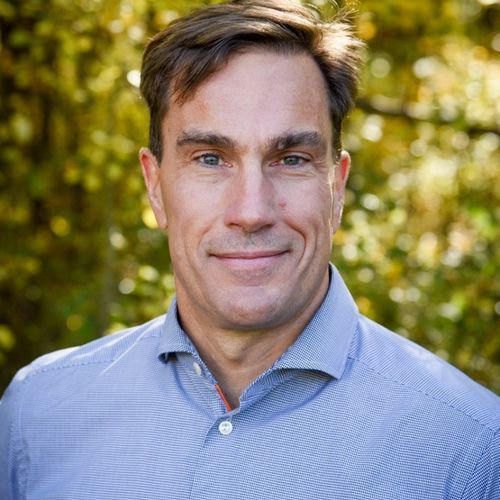
- 12 30 PM
The Geology of Carbon Sequestration: Successes and Failures Examined using Real Life Examples
The impact of high perm streaks and reservoir heterogeneity on oil and gas production and associated enhanced oil recovery (EOR) techniques is readily appreciated, but less attention has been paid...
Sponsored by : Capital Power
 Capital Power Knowledge Bar
Capital Power Knowledge Bar 12:30 PM - 1:30 PM
12:30 PM - 1:30 PM
The Geology of Carbon Sequestration: Successes and Failures Examined using Real Life Examples
 12:30 PM - 1:30 PM
12:30 PM - 1:30 PM Capital Power Knowledge Bar
Capital Power Knowledge Bar
The impact of high perm streaks and reservoir heterogeneity on oil and gas production and associated enhanced oil recovery (EOR) techniques is readily appreciated, but less attention has been paid to the importance of these attributes in relation to carbon sequestration (CCS). Heterogeneities may include more permeable sandstone or limestone beds, permeability enhancement through diagenesis and structural overprints such as fracturing and cataclasis. At least twenty-six CCS projects are currently in progress in Alberta, Canada. Many of these projects are located in contiguous acreage, using the same target reservoir interval, and consequently may facilitate leakage of injected fluids from one project site into another. This could lead to interference or even the catastrophic escape of carbon dioxide to the surface. A natural limnic eruption at Lake Nyos, North Cameroon killed 1746 people, due to a sudden release to surface of CO2, and a breach in seal rocks in a CCS project could be equally catastrophic. An understanding of reservoir sedimentology and its impact on high perm streaks in both the horizontal and vertical plane is critical to the successful modeling of carbon dioxide injection and sequestration. Depositional settings ranging from fluvial, aeolian, lacustrine, coastal, shallow to deep marine environments in both clastic and carbonate settings are examined in terms of their potential to incorporate significant and predictable high perm streaks and reservoir heterogeneities that could impact CCS. Many of these sedimentary features correlate to previously identified thief zones in producing hydrocarbon fields, but a full overview of the associated risks, as they relate to CCS, has not previously been compiled. Real life examples drawn from both successful CCS projects and CCS failure cases will be examined and conclusions drawn. The resulting data can be used to rank reservoir types in terms of their suitability for carbon sequestration and can also be combined with other requirements for successful injection (depth of burial;presence of seal or ideally seals;quiescent tectonic setting, etc.) to determine the most suitable injection targets.
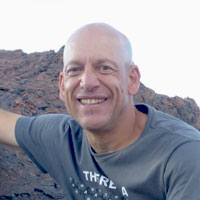
- 1 30 PM
Meeting the Needs of Every Emitter – CCUS Solutions for Today and Tomorrow
Over the past two years, the CCUS industry has witnessed a significant ramp-up of commercial activity across multiple sectors and geographies. This has been driven by increasingly favourable techno...
Sponsored by : Worley
 Worley Knowledge Bar
Worley Knowledge Bar 1:30 PM - 2:30 PM
1:30 PM - 2:30 PM
Meeting the Needs of Every Emitter – CCUS Solutions for Today and Tomorrow
 1:30 PM - 2:30 PM
1:30 PM - 2:30 PM Worley Knowledge Bar
Worley Knowledge Bar
Over the past two years, the CCUS industry has witnessed a significant ramp-up of commercial activity across multiple sectors and geographies. This has been driven by increasingly favourable technological, financial and regulatory conditions, which are allowing emitters to accelerate their investments and enter into deep decarbonization initiatives using carbon capture. During this presentation, we illustrate the recent step-changes in maturity gained in the CCUS industry via real-life case studies of projects underway and further demonstrate how Technip Energies and Shell CANSOLV have built a unique alliance to provide robust and state-of-the-art solutions at scale, ready-to-deploy for immediate decarbonization impact. We also provide an outlook on the latest technology developments in CO2 capture and discuss how the alliance is innovating to move into the next phase of CCS project delivery and operational excellence.
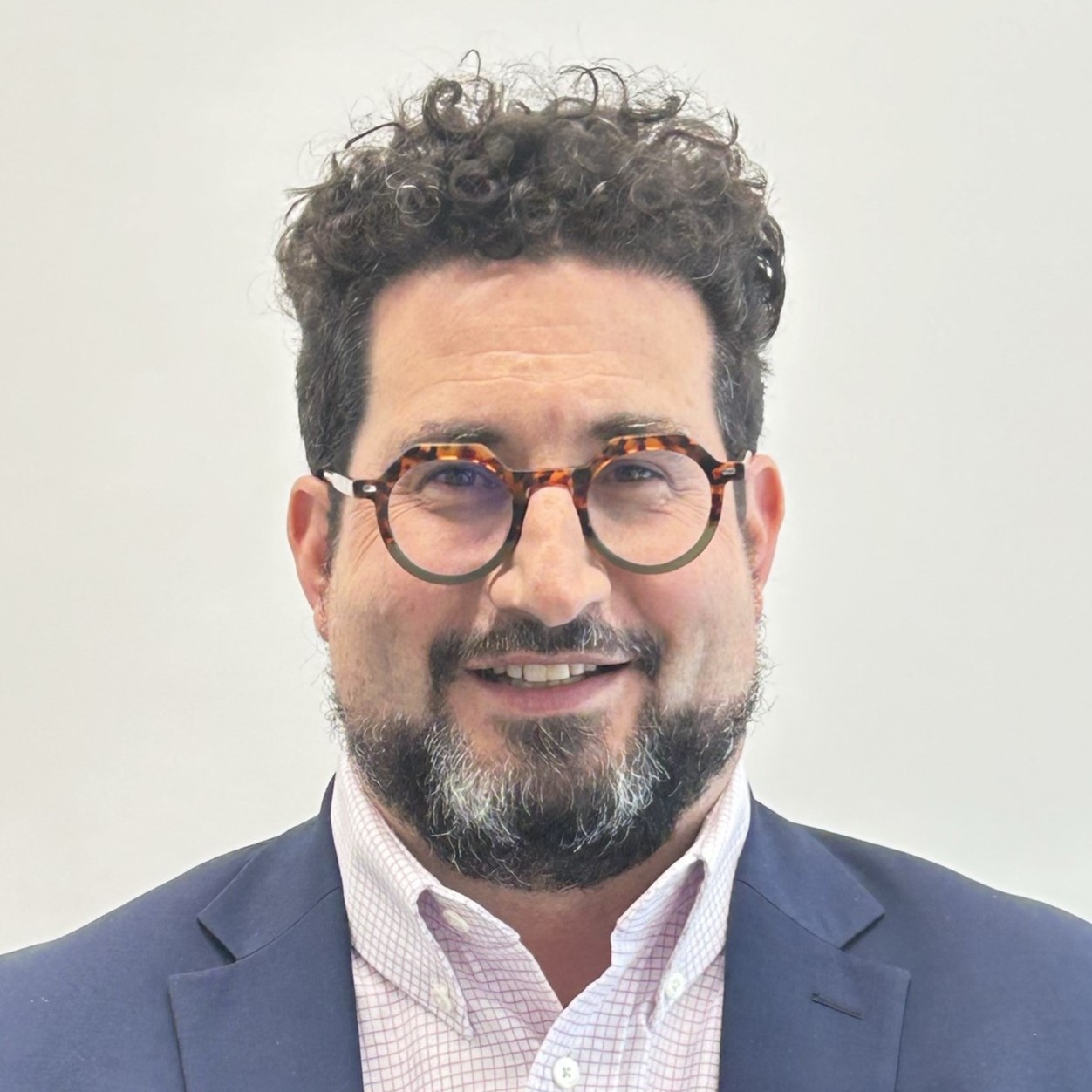
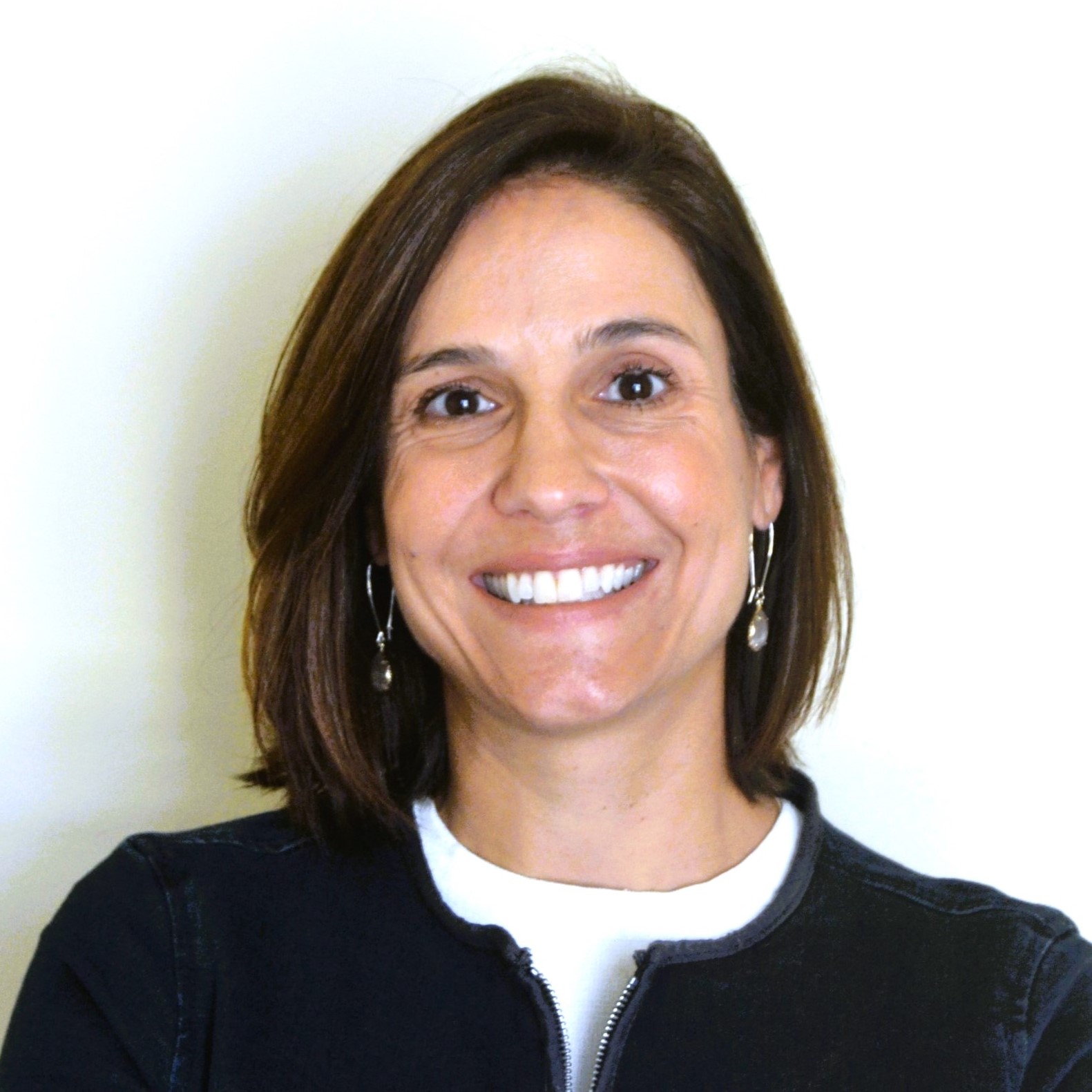
- 1 30 PM
Downhole Solutions for Underground Storage
Underground storage, including Carbon Capture and Hydrogen, is becoming a key strategic activity for many companies in Canada to help achieve various energy transition goals. While many design chal...
Sponsored by : Enbridge
 Enbridge Knowledge Bar
Enbridge Knowledge Bar 1:30 PM - 2:30 PM
1:30 PM - 2:30 PM
Downhole Solutions for Underground Storage
 1:30 PM - 2:30 PM
1:30 PM - 2:30 PM Enbridge Knowledge Bar
Enbridge Knowledge Bar
Underground storage, including Carbon Capture and Hydrogen, is becoming a key strategic activity for many companies in Canada to help achieve various energy transition goals. While many design challenges are similar to conventional hydrocarbon production due to the use of aquifers and depleted underground reservoirs, managing CO2 and H2 presents unique material and connection challenges. For CCS, the composition of the injection fluid, when combined downhole into saline aquifers, can create demanding conditions not suitable for conventional carbon steels. In addition, materials can be subject to temperatures as low as -70 degrees Celsius in certain loading conditions, placing connections under unique sealability scenarios. For Hydrogen, absorption of this gas into the steel microstructure can reduce material toughness and ductility. This presentation will discuss experiences and ongoing testing initiatives by Tenaris around the world to deepen the understanding of material properties and connection requirements in these environments.

- 1 30 PM
Innovative Pathways in Chemical Looping Technologies: Overview & Current Status
This presentation explores the transformative potential of chemical looping technology in sustainable energy production and emission control. By examining the latest advancements in materials and p...
Sponsored by : Pathways Alliance
 Pathways Alliance Knowledge Bar
Pathways Alliance Knowledge Bar 1:30 PM - 2:30 PM
1:30 PM - 2:30 PM
Innovative Pathways in Chemical Looping Technologies: Overview & Current Status
 1:30 PM - 2:30 PM
1:30 PM - 2:30 PM Pathways Alliance Knowledge Bar
Pathways Alliance Knowledge Bar
This presentation explores the transformative potential of chemical looping technology in sustainable energy production and emission control. By examining the latest advancements in materials and process design, including recent research activities in my group, we highlight how chemical looping can significantly reduce greenhouse gas emissions while enhancing efficiency in energy systems. In the second part of the presentation, I will briefly introduce our newly founded company, Climate Cure Corp., and its current and future goals.

- 1 30 PM
Converting Existing Crude Oil Pipeline into CCS Gathering with Steel-Reinforced Thermoplastic Pipe via Pipe-in-Pipe Rehabilitation
The emergence of new, low-carbon energy markets is compelling operators to find innovative ways to repurpose existing infrastructure to meet evolving needs. Challenges such as rising material costs...
Sponsored by : Capital Power
 Capital Power Knowledge Bar
Capital Power Knowledge Bar 1:30 PM - 2:30 PM
1:30 PM - 2:30 PM
Converting Existing Crude Oil Pipeline into CCS Gathering with Steel-Reinforced Thermoplastic Pipe via Pipe-in-Pipe Rehabilitation
 1:30 PM - 2:30 PM
1:30 PM - 2:30 PM Capital Power Knowledge Bar
Capital Power Knowledge Bar
The emergence of new, low-carbon energy markets is compelling operators to find innovative ways to repurpose existing infrastructure to meet evolving needs. Challenges such as rising material costs, lengthy installation times, and permitting hurdles constrain the feasibility and profitability of traditional pipeline installation methods. With rapidly aging infrastructure impairing the functionality of existing systems, operators face the necessity of either costly integrity programs or full replacements, driving the exploration of inventive ways to repurpose infrastructure. Steel-reinforced thermoplastic pipe products present unique solutions to these challenges, enabling operators to capitalize on long package lengths, high tensile capabilities, and flexible designs for swift rehabilitation of these systems. This paper details a case study showcasing the successful installation of a 36-mile, 6-inch steel-reinforced thermoplastic pipeline dedicated to Carbon Capture & Storage (CCS) initiatives. The pipeline deployment involved a combination of traditional trenching and pipe-in-pipe rehabilitation construction methods. Serving as a vital conduit for acid gas waste extracted from over 1,100 wells across four production facilities, this 6-inch pipeline facilitated the transportation of up to 12 million cubic feet per day. Eliminating corrosion risks, the steel-reinforced thermoplastic pipeline effectively directed the gas to a designated Class II injection well, contributing to the offset of approximately 180,000 metric tons of CO2 annually. These proactive measures not only mitigated environmental hazards but also bolstered safety standards for local residents.

- 2 30 PM
BASF OASE Blue Technology Journey
As a global leader in gas treatment, BASF has an exceptional track record in licensing cutting-edge CO2 capture technologies in various applications including LNG, natural gas, syngas and ammonia p...
Sponsored by : Worley
 Worley Knowledge Bar
Worley Knowledge Bar 2:30 PM - 3:30 PM
2:30 PM - 3:30 PM
BASF OASE Blue Technology Journey
 2:30 PM - 3:30 PM
2:30 PM - 3:30 PM Worley Knowledge Bar
Worley Knowledge Bar
As a global leader in gas treatment, BASF has an exceptional track record in licensing cutting-edge CO2 capture technologies in various applications including LNG, natural gas, syngas and ammonia plants. Under the OASE® brand, BASF provides CO2 capture using solvent based technology boasting with an impressive portfolio of over 500 successful installations worldwide. With the current global decarbonization push gaining momentum, BASF is uniquely positioned to support various industries by capitalizing on our extensive expertise to develop CO2 capture solution in post-combustion flowsheet. From the very beginning, OASE® blue was developed specifically as an optimized large-scale CO2 capture technology, with a clear focus on addressing the critical requirements of customers who are considering to install a carbon capture unit. The technology provides customized package along with highly stable and low-maintenance solvent solutions. With low energy consumption, low solvent losses and emissions, OASE® blue meets paramount technology for CO2 capture in flue gas streams from sources such as fossil power generation plants, steam reformers, waste incinerators and cement industry. This session will summarize the development of OASE blue technology, aiming to provide attendees with a clear understanding of its journey, key features, and latest advancements.

- 2 30 PM
Simulating Captured CO2: Simulator Selection and Impurity Impacts on Design
Minimizing commercial and performance risk of carbon capture projects is a key focus for project developers in this rapidly evolving market. However, while capture technology providers often have t...
Sponsored by : Enbridge
 Enbridge Knowledge Bar
Enbridge Knowledge Bar 2:30 PM - 3:30 PM
2:30 PM - 3:30 PM
Simulating Captured CO2: Simulator Selection and Impurity Impacts on Design
 2:30 PM - 3:30 PM
2:30 PM - 3:30 PM Enbridge Knowledge Bar
Enbridge Knowledge Bar
Minimizing commercial and performance risk of carbon capture projects is a key focus for project developers in this rapidly evolving market. However, while capture technology providers often have their own customized and proprietary software to model carbon capture processes, downstream CO2 handling systems (compression, dehydration, and transportation) must be modeled by the project developer’s own engineering team in order to design these systems and optimize their economics. The simulation of the downstream CO2 handling systems is typically done using commercially available software and requires selection of a property package to model the equipment and determine the corresponding design, power, and duty requirements. Based on the results of the simulation, preliminary equipment sizing and selections are made to complete capital and operating cost estimates. Confidence in the correct selection of simulation software and property package is essential to having confidence in correctly specifying these systems. This is especially important for meeting final pipeline specifications (and preventing costly and disruptive shut-ins of the capture unit), as well as accurately estimating cost to the project. There are numerous published papers on property package comparisons and recommendations regarding which property packages provide the best match to theoretical data. Some of these property packages are limited in available components or may not be one of the default options available in the simulation software. However, from a practical standpoint, what impact does the property package selection for simulation work really have on equipment or pipeline design, specifically capital and operating costs? Does the selection of the simulation vendor, when using the same property package, affect the results? Do process stream impurities impact the results differently between simulation vendors and between property package selection? This presentation focuses on reviewing the real-world impact of simulation software and property package selection on equipment design, capital cost, and operating cost. A comparison of properties, power, and duties of a multistage CO2 compression system modeled using different simulators and property packages is presented. The sample simulation model allows for examination of operating conditions in the gas phase, near the critical point, and at supercritical (dense phase) areas. High level capital and operating cost estimates are presented with discussion on the differences, leading to a better understanding of the impact of type of simulator and property package selection on a project.


- 2 30 PM
Elevating Post-combustion Carbon Capture with Innovative Solvent Based Technologies
Post-combustion carbon capture has been globally recognized as a pivotal business for a sustainable future of human being. The success of a post-combustion project needs to surmount the challenges...
Sponsored by : Pathways Alliance
 Pathways Alliance Knowledge Bar
Pathways Alliance Knowledge Bar 2:30 PM - 3:30 PM
2:30 PM - 3:30 PM
Elevating Post-combustion Carbon Capture with Innovative Solvent Based Technologies
 2:30 PM - 3:30 PM
2:30 PM - 3:30 PM Pathways Alliance Knowledge Bar
Pathways Alliance Knowledge Bar
Post-combustion carbon capture has been globally recognized as a pivotal business for a sustainable future of human being. The success of a post-combustion project needs to surmount the challenges related to CAPEX and OPEX, environment impact and operation excellence. These challenges can only be addressed by technology innovations. SLB is collaborating with RTI International to advance the commercialization of RTI’s nonaqueous solvent (NAS), an innovative water-lean amine-based solvent. Over a 15-year science-based development journey, NAS has been formulated to deliver excellent performance. Characterized by fast kinetics, low energy consumption, and minimal corrosive tendencies, the performance of NAS has been validated by extensive laboratory studies and more than 4000 hours tests at larger scales. This presentation will showcase key findings derived from parametric and long-term testing conducted at both the pilot scale (1 t-CO2/day) at SINTEF’s Tiller plant and the engineering scale (220 t-CO2/day) at the Technology Centre, Mongstad, Norway. Notably, NAS has demonstrated remarkable performance metrics including low specific reboiler duty (SRD) (e.g., 2.3-2.6 GJ/t-CO2 for coal at coal flue gas conditions) and the ability to operate within compact footprints (absorber height < 12 m) even in simple process configurations. Furthermore, comprehensive corrosion resistance assessments have revealed NAS's compatibility with both carbon steel and stainless-steel materials, ensuring operational durability. It is also worth noting that the long-term tests have proven that the emissions can be consistently maintained well below regulatory limits. The exceptional performance of NAS has been well recognized. RTI International, SLB, and other emitter partners are conducting a FEED study for 1.6 MM t-CO2/year CO2 capture from a cement plant funded by the US Department of Energy. RTI and SLB have also been selected for negotiations for a large pilot for CO2 capture from a pulp and paper mill by the US Department of Energy, Office of Clean Energy Demonstration (DOE-OCED). This presentation will conclude with an overview of these FEED studies, underscoring the transformative potential of NAS in advancing the efficacy and viability of post-combustion carbon capture initiatives.


- 2 30 PM
Subsurface Factors that Impact Multi-Well Spacing for CO2 Injection
Large-scale Carbon Capture and Storage (CCS) projects, such as injection hubs or large-volume emitters, require the use of multiple wells to handle the total project CO2 volume. Strategic well plac...
Sponsored by : Capital Power
 Capital Power Knowledge Bar
Capital Power Knowledge Bar 2:30 PM - 3:30 PM
2:30 PM - 3:30 PM
Subsurface Factors that Impact Multi-Well Spacing for CO2 Injection
 2:30 PM - 3:30 PM
2:30 PM - 3:30 PM Capital Power Knowledge Bar
Capital Power Knowledge Bar
Large-scale Carbon Capture and Storage (CCS) projects, such as injection hubs or large-volume emitters, require the use of multiple wells to handle the total project CO2 volume. Strategic well placement is critical for optimization of land usage and injection efficiency, as it can be used to ensure maximum injection per well through the life of the project, while also minimizing the CO2 plume’s footprint. Dynamic reservoir modeling is an essential tool for investigating well placement and spacing, as it provides insight into the extent of simulated CO2 plumes and pressure-front interactions between closely spaced wells. Well spacing can impact an individual well’s total injectivity over time due to pressure interference between multiple wells, which can both hinder a well’s ability to maximize injection volumes and impact the shape of the injected CO2 plume. This paper investigates how formation thickness and formation porosity/permeability can influence well spacing. To demonstrate the impact of these factors on well spacing, four geologic models were created with the following characteristics: 1) thick injection formation with high porosity/permeability, 2) thick injection formation with low porosity/permeability, 3) thin injection formation with high porosity/permeability, 4) thin injection formation with low porosity/permeability. Two model frameworks were created, one for the thick injection formation, and one for the thin injection formation, and each were populated with the same value properties for either the high or low porosity/permeability cases. Both model frameworks were absent of any fault or dip elements to ensure exclusion of structural influence on the model results. Constant properties for porosity and permeability were assigned in the models to eliminate the possibility of unintended anisotropies that could result from geostatistical modeling methods, and potentially impact the outcome of the study. The four geologic models were imported into a dynamic reservoir simulator, subsequently creating four simulation cases. Each case utilized the same additional inputs, such as PVT data and relative permeability relationships. Simulated injection rates were constrained at 90% of a 0.75 psi/ft fracture gradient, following US-EPA guidelines, and the simulation assumed continuous CO2 injection in two wells over a 12-year period. Following each simulation run, results were visually analyzed to compare plume size and shape for differences, while pressure and rate plots were evaluated for any sign of interference between the two wells. When interference was identified in either the plume result or pressure and rate plots, the simulation was repeated with the wells further spaced apart. This exercise was repeated until the results showed no interaction between the two injected wells. Results indicate that well spacing is closest for the thicker formation with the high porosity/permeability, and farthest apart for the thin formation with low porosity/permeability.

- 3 30 PM
CycloneCC: The Technology to Accelerate Industrial Decarbonization
Carbon capture technology plays a critical role in reducing emissions. In retrofit projects, where space constraints are common, shrinking equipment size can offer significant advantages – making c...
Sponsored by : Worley
 Worley Knowledge Bar
Worley Knowledge Bar 3:30 PM - 4:30 PM
3:30 PM - 4:30 PM
CycloneCC: The Technology to Accelerate Industrial Decarbonization
 3:30 PM - 4:30 PM
3:30 PM - 4:30 PM Worley Knowledge Bar
Worley Knowledge Bar
Carbon capture technology plays a critical role in reducing emissions. In retrofit projects, where space constraints are common, shrinking equipment size can offer significant advantages – making carbon capture possible for hard-to-abate industries. Large, costly, and complex CCUS projects will only chip away at global emissions. Deploying modular, standardized carbon capture solutions across many industrial sites will deliver more for climate mitigation and local economies. CycloneCC is Carbon Clean’s next generation carbon capture technology that makes carbon capture scalable and more affordable – bringing it within reach of a huge number of industrial emitters. CycloneCC overcomes traditional barriers to widespread adoption by reducing the overall capital expenditure (CapEx) and the physical footprint of carbon capture by up to 50% when compared to conventional solutions. It achieves this through a combination of two proven process intensification technologies – Carbon Clean’s advanced, proprietary amine-promoted buffer salt solvent, APBS-CDRMax®, and rotating packed beds (RPBs). APBS-CDRMax® has been developed by Carbon Clean and tested at the world’s largest CO2 capture pilot and demonstration facilities, including the National Carbon Capture Center (Alabama, USA) and Technology Centre Mongstad (Norway), capturing up to 240 tonnes of CO2 per day. The solvent has been proven to require up to 30% less energy for regeneration when compared to the industry standard 30 wt.% monoethanolamine (MEA), at comparable capture rates. In addition, it has been validated that APBS-CDRMax® has low solvent and ammonia emissions which provides an improved environmental performance relative to benchmarked solvents. Whilst the improved solvent stability to oxidative and thermal degradation pathways, results in lower solvent make-up rates. Overall, the improved performance of the solvent means that the operating expenditure (OpEx) of APBS-CDRMax® can be reduced, relative to that of 30wt% MEA. Built on a pre-fabricated skid mount, every CycloneCC unit can be delivered ready to install, avoiding a lengthy and complex design, build and engineering process. There is minimal disruption to operations and safety risks onsite are significantly reduced. The technology has been successfully pilot-tested at 1 TPD in the UK and US, where it has been proven to reduce the packing volume required to capture CO2 by 10 times. It is currently being demonstrated at a capacity of 10 TPD in the Middle East with ADNOC at Fertiglobe where it will be capturing CO2. Further scale-up of CycloneCC is underway, with the designs of commercial systems being completed for 100 TPD capacities with select partners, including CEMEX, Chevron, and Samsung Engineering who will be using the technology in the maritime sector.

- 3 30 PM
Heat Integration for Carbon Capture
Most Carbon Capture processes rely on heat as a crucial component of the operation, typically sourced from steam provided by a package boiler or a Heat Recovery Steam Generator (HRSG). With natural...
Sponsored by : Enbridge
 Enbridge Knowledge Bar
Enbridge Knowledge Bar 3:30 PM - 4:30 PM
3:30 PM - 4:30 PM
Heat Integration for Carbon Capture
 3:30 PM - 4:30 PM
3:30 PM - 4:30 PM Enbridge Knowledge Bar
Enbridge Knowledge Bar
Most Carbon Capture processes rely on heat as a crucial component of the operation, typically sourced from steam provided by a package boiler or a Heat Recovery Steam Generator (HRSG). With natural gas being the fuel, in most cases, the emissions of this new steam supply also need to be captured. The capture process needs to account for the mix created by the existing flue gas from a facility and the new steam source for optimal performance. In addition, certain strategies of controlling the boiler operation and adding supplementary firing can help improve the flue gas characteristics for better compatibility with solvents. This presentation will explore the available steam supply sources that can match the requirements of heat of a typical carbon capture process as well as consider strategies for optimizing the integration of these sources. These considerations will help carbon capture project developers, consultants and engineers make key decisions that will further de-risk their projects, optimize costs and improve process designs.

- 3 30 PM
Enabling CO2 Capture Technology Development
A general overview of various CO2 capture-related technology development services and ongoing projects: • Characterizing capture solvent / sorbent properties and performance at lab scale • Proof...
Sponsored by : Pathways Alliance
 Pathways Alliance Knowledge Bar
Pathways Alliance Knowledge Bar 3:30 PM - 4:30 PM
3:30 PM - 4:30 PM
Enabling CO2 Capture Technology Development
 3:30 PM - 4:30 PM
3:30 PM - 4:30 PM Pathways Alliance Knowledge Bar
Pathways Alliance Knowledge Bar
A general overview of various CO2 capture-related technology development services and ongoing projects: • Characterizing capture solvent / sorbent properties and performance at lab scale • Proof of concept and prototyping of novel capture processes • Capture solvent testing in our 6 TPD capture unit at the ACCTC • Amine intensification JIP
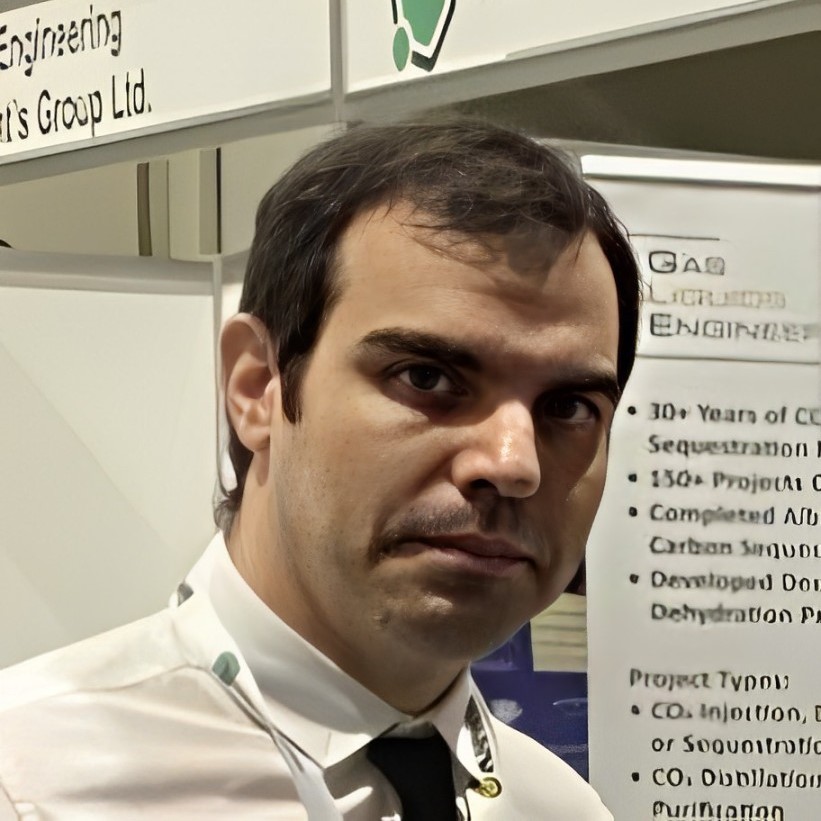

- 3 30 PM
Understanding the Role and Complexities of Voluntary Carbon Credits
The race towards achieving net-zero emissions by 2050 has mobilized a wide array of strategies and mechanisms, with voluntary carbon credits playing a pivotal role. Voluntary carbon credits serve a...
Sponsored by : Capital Power
 Capital Power Knowledge Bar
Capital Power Knowledge Bar 3:30 PM - 4:30 PM
3:30 PM - 4:30 PM
Understanding the Role and Complexities of Voluntary Carbon Credits
 3:30 PM - 4:30 PM
3:30 PM - 4:30 PM Capital Power Knowledge Bar
Capital Power Knowledge Bar
The race towards achieving net-zero emissions by 2050 has mobilized a wide array of strategies and mechanisms, with voluntary carbon credits playing a pivotal role. Voluntary carbon credits serve as a market-based instrument allowing individuals and organizations to compensate for their carbon footprint by investing in projects that reduce or remove greenhouse gas emissions from the atmosphere. These credits are a key component of the broader strategy to mitigate climate change, complementing direct emissions reductions with scalable and flexible solutions. The importance of voluntary carbon credits lies in their ability to bridge the gap between current carbon reduction efforts and the ambitious targets set for mid-century. They offer a mechanism through which non-state actors can contribute to global climate goals, fostering innovation and financing for carbon reduction projects that might otherwise struggle to find support. Projects financed by carbon credits span various sectors, including renewable energy, reforestation, and energy efficiency, thus encouraging sustainable development and technology transfer to less developed regions. However, participating in the voluntary carbon market entails several complexities. A primary challenge is ensuring the integrity and credibility of carbon credits. This involves rigorous standards and third-party verification to guarantee that claimed reductions are real, additional, and permanent. Another layer of complexity arises from the market's fragmented nature, with multiple standards and registries leading to variability in credit quality and pricing. This can create challenges for buyers in comparing and validating credits. Furthermore, the market faces regulatory uncertainties and evolving guidelines, which can impact long-term planning and investments. Additionally, there are concerns related to the potential for greenwashing, where companies might use carbon credits as a way to delay substantive internal emissions reductions. Addressing these concerns requires transparent reporting and a robust framework for evaluating the overall carbon neutrality efforts of participants. Specialized expertise is required in the development of premium carbon credits that are both high quality and long-lasting. Innovative transaction models are idesigned to optimize market benefits for sellers and provide buyers with a secure investment in carbon offsets. By maximizing the value of each credit and ensuring buyers receive a full return on their investment, value-added solutions can enhance the overall market for carbon offsets. In conclusion, while voluntary carbon credits are a crucial tool in the arsenal against climate change and in the pursuit of net-zero emissions by 2050, engaging with this market demands careful consideration of its regulatory, verification, and ethical complexities. Ensuring the effectiveness and integrity of carbon credits is essential for them to contribute meaningfully to global climate targets.
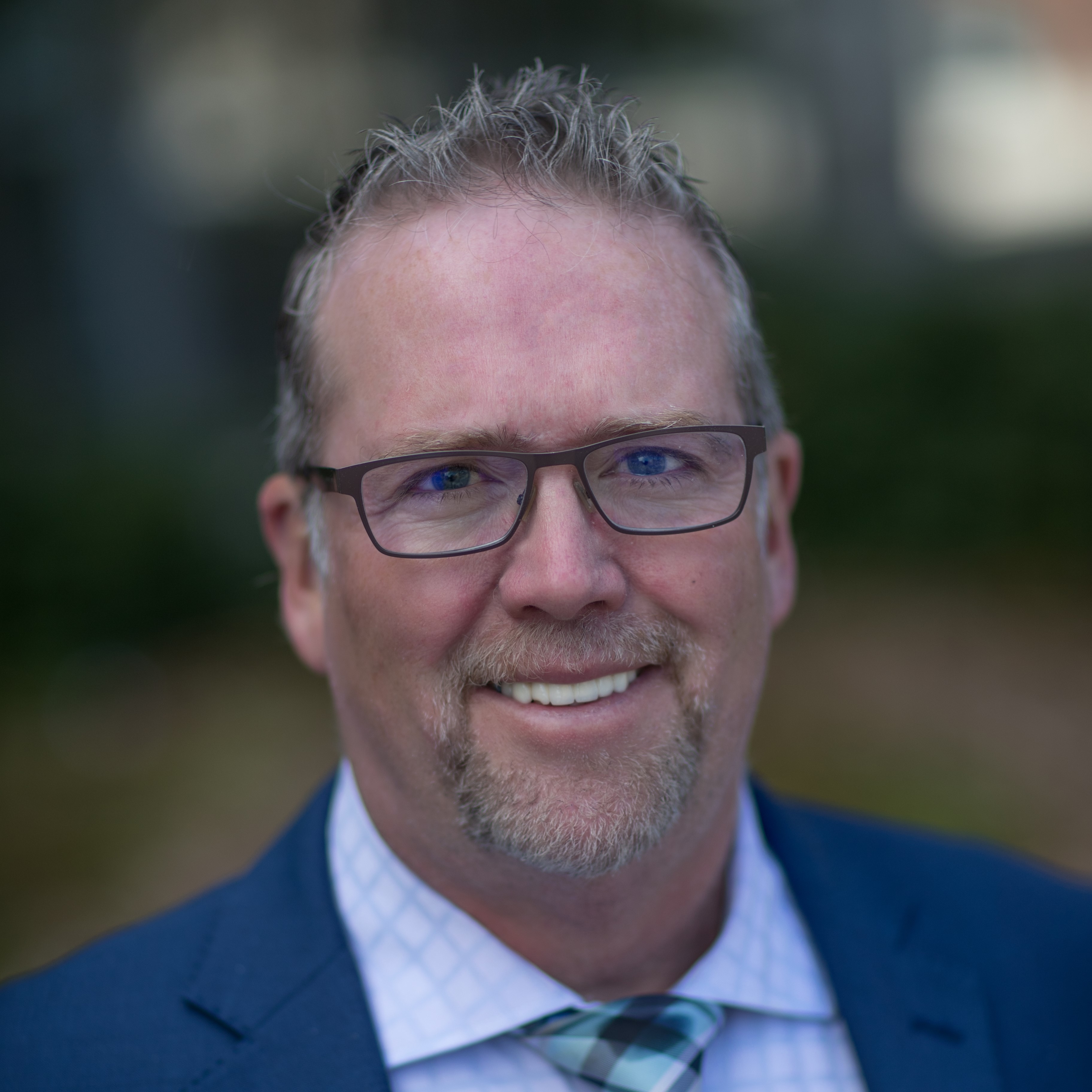
- 4 30 PM
Industry Networking Reception
 Worley/Enbridge/Pathways Alliance/Capital Power Knowledge Bars
Worley/Enbridge/Pathways Alliance/Capital Power Knowledge Bars 4:30 PM - 6:00 PM
4:30 PM - 6:00 PM
Industry Networking Reception
 4:30 PM - 6:00 PM
4:30 PM - 6:00 PM Worley/Enbridge/Pathways Alliance/Capital Power Knowledge Bars
Worley/Enbridge/Pathways Alliance/Capital Power Knowledge Bars
- 10 30 AM
Key Factors in Selecting Pre-Combustion Carbon Capture Technologies and Emerging Trends
As the world shifts towards sustainable energy sources, the imperative for effective carbon dioxide (CO2) capture technologies in hydrogen production by reforming facilities becomes increasingly ev...
Sponsored by : Worley
 Worley Knowledge Bar
Worley Knowledge Bar 10:30 AM - 11:30 AM
10:30 AM - 11:30 AM
Key Factors in Selecting Pre-Combustion Carbon Capture Technologies and Emerging Trends
 10:30 AM - 11:30 AM
10:30 AM - 11:30 AM Worley Knowledge Bar
Worley Knowledge Bar
As the world shifts towards sustainable energy sources, the imperative for effective carbon dioxide (CO2) capture technologies in hydrogen production by reforming facilities becomes increasingly evident. This transition encompasses a spectrum of methodologies, with notable solutions including amine wash, hot potassium carbonate solution, physical solvent-based processes, and cryogenic techniques. Each method presents unique advantages and considerations tailored to specific application scenarios. The amine wash method employs specially formulated amine solutions to chemically absorb CO2 from syn gas streams, subsequently releasing it within a desorber column. Similarly, the hot potassium carbonate solution utilizes potassium carbonate as a chemical scrubbing agent, with CO2 release occurring within a desorber column at elevated temperatures. In contrast, physical solvent-based processes rely on physical absorption at high pressure to separate CO2 from syn gas streams, followed by desorption to isolate the CO2. Cryogenic techniques, on the other hand, leverage low temperatures to condense CO2 into a liquid phase, facilitating separation within a distillation column. These methodologies yield CO2 with purity exceeding 99% (dry basis) and varying recovery rates from 95% to 99.5%, meeting diverse gas treatment requirements and CO2 product specifications. However, the selection of an appropriate approach hinges on a multitude of factors, encompassing economic viability, technology readiness level, and project objectives. In the realm of high purity blue hydrogen production, large-scale Pressure Swing Adsorption (PSA) systems assume a pivotal role. Two configurations—front-end and back-end PSA—offer distinct advantages, ensuring continuous hydrogen supply and optimizing CO2 separation system size. The choice of CO2 capture technology profoundly influences the project economics, plant on-stream factor and reliability of the plant. Solvent-based systems, for instance, facilitate downstream PSA by producing a CO2-depleted stream, thereby reducing PSA size. Conversely, cryogenic-based CO2 capture poses challenges in equipment volume and cost to handle large volume of syngas, demanding meticulous evaluation. However, with a front-end PSA configuration, cryogenic technology may offer several advantages. Economic analyses, including comprehensive cost-benefit assessments and risk analyses, guide the selection of the Best Available Technology (BAT) for each project. These evaluations, conducted by experts in the field, ensure alignment with project scopes and objectives. Through meticulous consideration and strategic implementation, the integration of effective CO2 capture technologies in a green filed blue hydrogen production or retrofitting to an existing grey hydrogen production facility holds promise for a greener and more sustainable energy future.
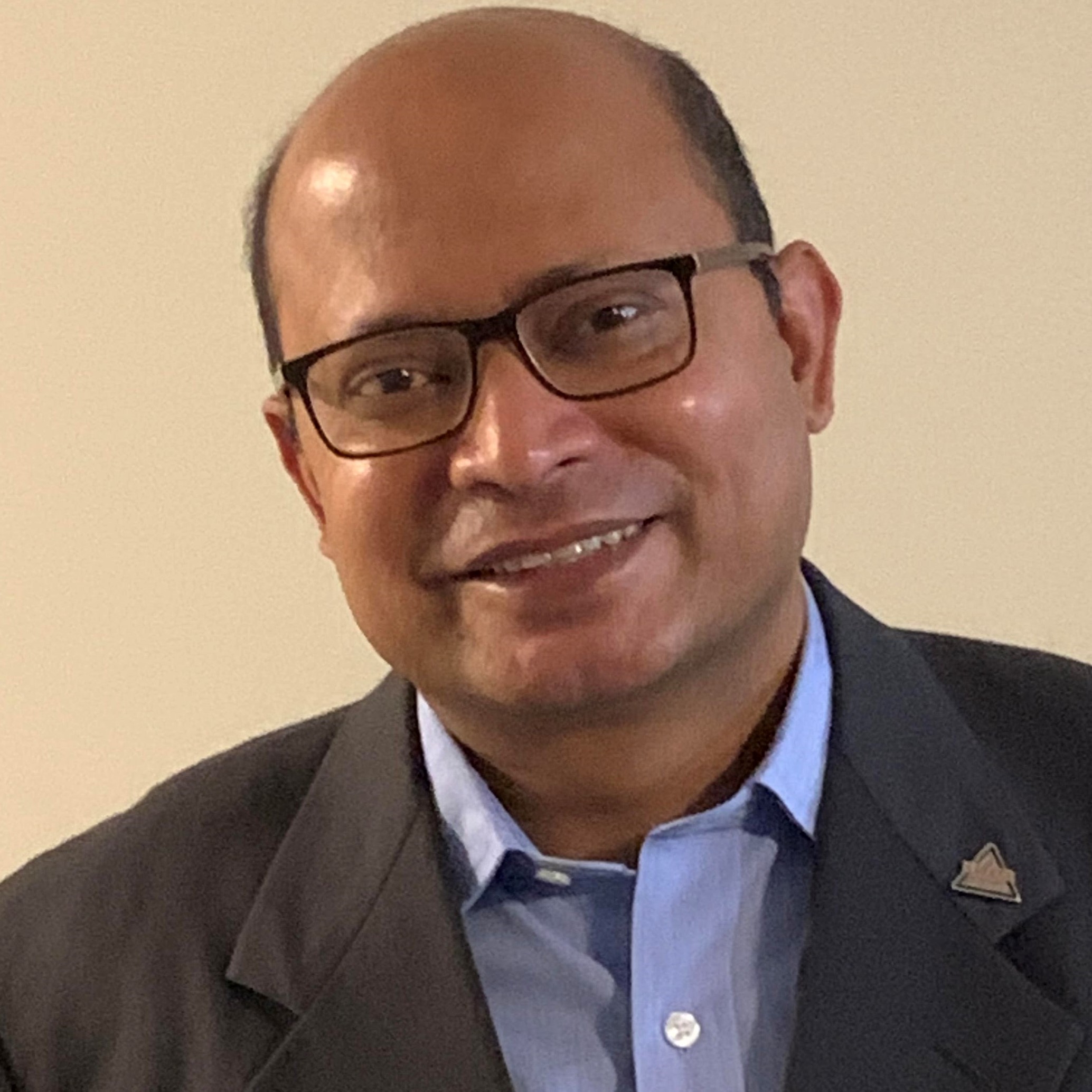
- 10 30 AM
Fireside Chat: Engaging Communities: The Wabamun Hub, Indigenous Partnerships, and the Role of the CCS Knowledge Centre
This session will explore the collaborative efforts of the Wabamun Hub, highlighting its community and Indigenous partnerships. Learn about the International CCS Knowledge Centre's pivotal role in...
Sponsored by : Enbridge
 Enbridge Knowledge Bar
Enbridge Knowledge Bar 10:30 AM - 11:30 AM
10:30 AM - 11:30 AM
Fireside Chat: Engaging Communities: The Wabamun Hub, Indigenous Partnerships, and the Role of the CCS Knowledge Centre
 10:30 AM - 11:30 AM
10:30 AM - 11:30 AM Enbridge Knowledge Bar
Enbridge Knowledge Bar
This session will explore the collaborative efforts of the Wabamun Hub, highlighting its community and Indigenous partnerships. Learn about the International CCS Knowledge Centre's pivotal role in advancing helping advance carbon capture and sequestration (CCS) projects. We will discuss the shared ambitions for proper public engagement, ensuring transparency and trust in CCS project development.

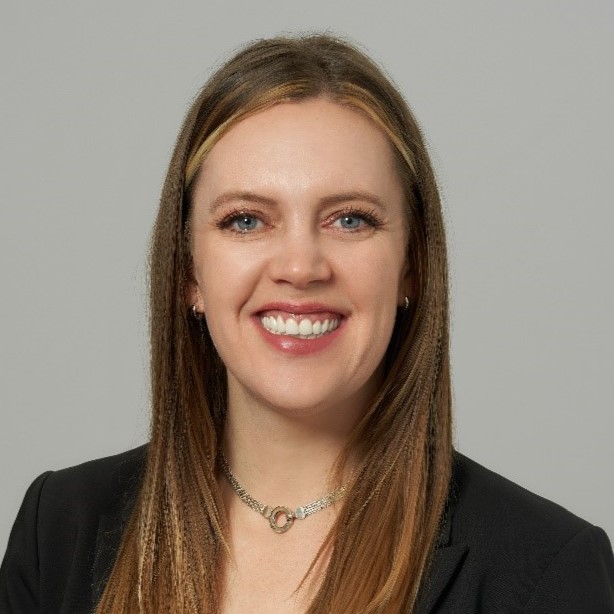
- 10 30 AM
Next-Gen Carbon Capture Technologies
The Pathways Alliance has completed a global scan of new and novel carbon capture technologies which have the potential to provide superior technical performance and economic benefits relative t...
Sponsored by : Pathways Alliance
 Pathways Alliance Knowledge Bar
Pathways Alliance Knowledge Bar 10:30 AM - 11:30 AM
10:30 AM - 11:30 AM
Next-Gen Carbon Capture Technologies
 10:30 AM - 11:30 AM
10:30 AM - 11:30 AM Pathways Alliance Knowledge Bar
Pathways Alliance Knowledge Bar
The Pathways Alliance has completed a global scan of new and novel carbon capture technologies which have the potential to provide superior technical performance and economic benefits relative to the existing capture technologies for potential deployment in the oil sands. This presentation will provide an overview of the study methodology, key findings and planned next steps.


- 10 30 AM
Effective and Efficient Active 4D Seismic Monitoring of a Dynamic CO2 Plume
CO2 geologic sequestration projects have two primary monitoring objectives: 1) passive seismic monitoring for induced seismicity that may be caused by injection operations, and which may be indicat...
Sponsored by : Capital Power
 Capital Power Knowledge Bar
Capital Power Knowledge Bar 10:30 AM - 11:30 AM
10:30 AM - 11:30 AM
Effective and Efficient Active 4D Seismic Monitoring of a Dynamic CO2 Plume
 10:30 AM - 11:30 AM
10:30 AM - 11:30 AM Capital Power Knowledge Bar
Capital Power Knowledge Bar
CO2 geologic sequestration projects have two primary monitoring objectives: 1) passive seismic monitoring for induced seismicity that may be caused by injection operations, and which may be indicative of caprock failure, and 2) imaging the CO2 plume extent using active seismic surveys, either in the form of 3D VSPs or active 2D or 3D surface seismic. 3D VSP surveys can be an economical alternative, however the extent to which the plume can be imaged is limited by the depth of the observation well and that well’s proximity to the injection well. 2D surface seismic can also be an economical alternative for sequestration projects with very low injection rates, however a 3D image will provide the best opportunity to image the plume, and in particular map the CO2 as it finds the pathways of maximum permeability in the reservoir. We propose that an array suitably designed to address the first objective, i.e., induced seismicity that may be caused by injection operations, can also provide an adequate receiver array to perform a cost-effective time-lapse 3D survey to address the second objective, i.e., map the CO2 as it finds the pathways of maximum permeability in the reservoir. The requirement to track the CO2 plume is driven by the following: 1. Confirm compliance with the submitted and approved sequestration plan. 2. Confirm reservoir conformance. 3. Deny leakage concerns both shallow and deep. 4. Deny any pore space trespass. 5. Allocate royalties. 6. Verify tax credit qualification. To address injection monitoring induced seismicity objectives, we propose the installation of a permanent BuriedArray of 3-component geophones, with the ability to detect induced seismicity with a magnitude of completeness of approx. Mc = -2, accurate to better than 50 ft vertically, and better than 25 ft horizontally. The system enables a traffic light protocol to be employed, so that operational decisions can be made based on real-time data. The cost of an active 3D survey using conventional surface geophones is significant, requiring extensive field operations related to the deployment and retrieval of surface recording stations, with associated personnel and equipment. These costs can be substantially reduced by utilizing the permanent BuriedArray as a fixed receiver array and making use of source-receiver reciprocity to achieve CDP fold sufficient to provide an accurate subsurface image.

- 11 30 AM
Updated for MHI KM CDR Process ™
Mitsubishi Heavy Industries, Ltd. (MHI) developed the high-efficiency post-combustion CO2 capture technology known as the KM CDR Process (TM) with Kansai Electric Power Co., Inc. (KEPCO). As of May...
Sponsored by : Worley
 Worley Knowledge Bar
Worley Knowledge Bar 11:30 AM - 12:30 PM
11:30 AM - 12:30 PM
Updated for MHI KM CDR Process ™
 11:30 AM - 12:30 PM
11:30 AM - 12:30 PM Worley Knowledge Bar
Worley Knowledge Bar
Mitsubishi Heavy Industries, Ltd. (MHI) developed the high-efficiency post-combustion CO2 capture technology known as the KM CDR Process (TM) with Kansai Electric Power Co., Inc. (KEPCO). As of May 2024, eighteen commercial plants with CO2 capacities ranging from 0.3 tons per day to 4,776 tons per day had been delivered around the world. This process efficiently captures CO2 from various facilities, including power plant flue gas, and is contributing to the energy transition. Specifically, MHI demonstrated very high CO2 capture (over 99%) in a long-term test campaign at the KEPCO / MHI pilot plant and Technology Centre Mongstad (TCM), Norway, in 2021. ExxonMobil and MHI entered a carbon capture technology alliance in 2022. Leveraging strengths of both companies to meet customer needs, ExxonMobil and MHI will each provide strength in CO2 capture technology and CO2 transportation/storage, respectively. In addition, work together to develop next-generation liquid amine technology for CO2 capture. This joint effort will ensure all customers have a comprehensive end-to-end solution to drive a low-carbon future. Not satisfied with operating numerous commercial plants, KM CDR Process (TM) continues to improve to reduce energy consumption, CO2 capture cost through further development of proprietary solvent and optimization of the process system." Below are the recent notable updates: 1. Conducted pilot tests on various facilities such as biomass, waste, gas engines, ships, cement plants, steel plants, wood pellet plants, etc. Based on these results, an appropriate design approach was established for each flue gas, considering the effects of impurities in flue gas and its countermeasures. 2. Conducted many integration studies with cement plants, FPSOs, ships, CCGTs, and others. These integration studies include optimizing the heat recovery system between the host unit and CO2 capture and treating flue gas impurity removal. 3. Launch a new commercial plant in Bangladesh using KS-21(TM) and a commercial unit in Italy for gas turbine flue gas. The Bangladesh plant has a unique feature, which is the capability to utilize both KS-1(TM) and KS-21(TM). For the commissioning stage and beginning of commercial operation phase, KS-1(TM) is used, which has significant proven operation record, for stable plant start up purpose. KS-21(TM) is used after the stabilization of the plant operation. This presentation focuses on updating the Advanced KM CDR Process (TM), especially the pilot test result for cement flue gas, and lessons learned from the first commercial plant using KS-21(TM) in Bangladesh and the Italian CO2 capture unit for gas turbine flue gas. Finally, MHI would like to introduce "MHI Low Carbon Solution Canada ULC," which was recently established in Calgary to focus on the CCS business in Canada. Working closely with Mitsubishi Power Canada, the MHI group is willing to contribute to the energy transition in Canada.

- 11 30 AM
The Business Case for CCS Projects under Current Canadian Incentives
As CCUS incentive programs advance around the world, project developers face the difficult decision of where to invest their capital. On paper, Canada's, and Alberta's, various incentive program...
Sponsored by : Enbridge
 Enbridge Knowledge Bar
Enbridge Knowledge Bar 11:30 AM - 12:30 PM
11:30 AM - 12:30 PM
The Business Case for CCS Projects under Current Canadian Incentives
 11:30 AM - 12:30 PM
11:30 AM - 12:30 PM Enbridge Knowledge Bar
Enbridge Knowledge Bar
As CCUS incentive programs advance around the world, project developers face the difficult decision of where to invest their capital. On paper, Canada's, and Alberta's, various incentive programs, funding opportunities, and carbon credit markets appear to place it among the top regions globally for CCUS project development. However, the Canadian investment environment is complex, making comparisons with other regions difficult. To receive the maximum benefit from a project, developers must stack multiple tax credits, grants and marketable offsets, rather than relying on a single mechanism such as the US 45Q tax credit. Furthermore, several of these incentives have not yet passed into law or have not been made widely available, resulting in uncertainty among investors. Our research will reduce this uncertainty by providing clarity around which incentives would be required to be stacked to provide a profitable business case for various CCS project types, and how that profitability would be impacted if any of the announced programs were not realized. Scope: We will provide an analysis of the average abatement costs for a variety of emitter types in Alberta on a levelized cost of capture, transport and storage (LCOCCS) basis. Project types analyzed will include gas power plants, gas processing plants, steam generation for oil production, blue hydrogen and ammonia production, and cement plants. We will provide an analysis of the impacts of announced incentives and policies including, the proposed federal CCUS ITC, the Alberta ACCIP, historical grant values offered by organizations such as ERA or the EIP, projected values of compliance credits under TIER, the Clean Fuel Regulations and federal credit markets, potential CCfD values offered by the Canada Growth Fund including the Entropy contract and any other contracts signed between now and the event, and tax avoidance impacts based on the projected carbon price under OBPS tax systems. Methods: Using Rystad Energy's LCOCCS models and cost estimating tools, we will model the projected costs of various CCS project types on a cost-per-tonne basis as well as in terms of total operating and capital expenditures, including the purchase and installation of equipment (key to the CCUS ITC and ACCIP). Using publicly available details on the incentives and policies outlined above, we will model their impacts on the capital and operating expenses of the various project types and determine which would be required to realize a negative LCOCCS for a given project, thereby providing a positive return. Conclusions: The outcomes of our analysis will provide a clear understanding of which project types have a promising business case under various announced incentive programs and credit markets. The analysis will also allow for a straightforward comparison of Canadian CCS incentives against other regional programs.

- 11 30 AM
Using Containment Risk Analysis to Build Cost-effective MMV Plans
Carbon Capture and Storage (CCS) is a technology that can help to reduce greenhouse gas emissions. However, there are risks associated with CCS;for the storage element, this includes the risk that...
Sponsored by : Pathways Alliance
 Pathways Alliance Knowledge Bar
Pathways Alliance Knowledge Bar 11:30 AM - 12:30 PM
11:30 AM - 12:30 PM
Using Containment Risk Analysis to Build Cost-effective MMV Plans
 11:30 AM - 12:30 PM
11:30 AM - 12:30 PM Pathways Alliance Knowledge Bar
Pathways Alliance Knowledge Bar
Carbon Capture and Storage (CCS) is a technology that can help to reduce greenhouse gas emissions. However, there are risks associated with CCS;for the storage element, this includes the risk that the storage site is not technically suitable for long-term storage of large volumes of CO2. Key risk factors include insufficient capacity for the anticipated injectate volume, poor injectivity, and loss of containment risk including the potential for measurable CO2 leaks. These risks can be considered as assurance issues – is the CO2 remaining, or contained, within the storage complex delineated by the project developer, and conformance issues – is there an acceptable level of agreement between predicted and measured storage performance? Monitoring, measurement, and verification (MMV) plans are required by regulators and comprise the activities and technology implementation across the project lifecycle to demonstrate the containment and conformance of the injected CO2. The plan must cover the mechanical integrity of wells, including injection, monitoring and legacy wells, integrity of the caprock or other sealing elements of the site, and be able to monitor the development and dynamic behavior of the CO2 plume. Additionally, an MMV plan must cover several monitoring ‘domains’ covering the geosphere of the injection zone and sealing layers, to the near surface hydrosphere, biosphere, and atmosphere. Loss of containment risk is a key element of MMV plans and is a site-specific issue. A Containment Risk Assessment (CRA) is an important part of the CO2 storage site selection process. The CRA identifies potential leak-paths and evaluates the likelihood and severity of any leakage. The basis of a CRA includes a multi-disciplinary analysis of the geological storage complex, incorporating legacy wells and future injector and monitor wells. All potential leak-paths, regardless of their perceived likelihood, are evaluated. A structured approach, utilizing the bowtie method, is recommended. Under this cross-discipline process, physical barriers which may prevent CO2 from leaving the storage complex, as well as mitigating measures that can either prevent and/or minimize the severity of any leakage, are mapped, and compiled into bowtie diagrams. Procedural barriers, which can include monitoring technology and/or implementation of corrective actions, further minimize the likelihood and/or severity of a specific leak and are added to the bowtie. By structuring the risk assessment around site-specific leak paths, project resources can be better optimized. Future work programmes can be focused on meaningful risk and uncertainty reduction while the project MMV plan can be focused on those leak paths which are considered to carry the greatest likelihood and severity. Monitoring technology selection is based on specific risks resulting in a cost-effective and proportionate MMV plan.
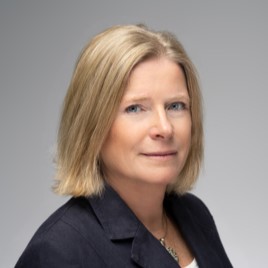
- 11 30 AM
Solvent Reclamation & Recycling in Post-Combustion Carbon Capture Systems
Many Alkanolamine (Amine) solvents such as Monoethanolamine and Methyldiethanolamine, which are used in the post-combustion carbon capture systems, are subject to chemical and non-chemical degradat...
Sponsored by : Capital Power
 Capital Power Knowledge Bar
Capital Power Knowledge Bar 11:30 AM - 12:30 PM
11:30 AM - 12:30 PM
Solvent Reclamation & Recycling in Post-Combustion Carbon Capture Systems
 11:30 AM - 12:30 PM
11:30 AM - 12:30 PM Capital Power Knowledge Bar
Capital Power Knowledge Bar
Many Alkanolamine (Amine) solvents such as Monoethanolamine and Methyldiethanolamine, which are used in the post-combustion carbon capture systems, are subject to chemical and non-chemical degradation. These solvents might react with impurities in the flue gas such as SOx, NOx and O2 that would lead to formation of different type of degradation products, or they might be thermally degraded with poor designed heat equipment within those systems. Gradual accumulation of these degradation products could lead to many operational problems in the carbon capture plant such as reduction of solvent absorption capacity, change of physical properties, increase of the solvent corrosivity, and change in the foaming tendencies. To avoid or minimize these operation challenges and many others, these solvents should be periodically or continuously purified in a solvent reclaimer unit. The suitable designed unit depends on the degradation products level, their accumulation rate, solvent capacity, and plant size. This work will discuss the topic in some details to help achieving successful carbon capture projects.

- 12 30 PM
M2C Technology - Utilization in CCUS Applications
Modular multi-level converters (M2C) are a proven technology and have been widely used in the HVDC industry and for medium voltage drives for over 15 years now. When talking about High Power applic...
Sponsored by : Worley
 Worley Knowledge Bar
Worley Knowledge Bar 12:30 PM - 1:30 PM
12:30 PM - 1:30 PM
M2C Technology - Utilization in CCUS Applications
 12:30 PM - 1:30 PM
12:30 PM - 1:30 PM Worley Knowledge Bar
Worley Knowledge Bar
Modular multi-level converters (M2C) are a proven technology and have been widely used in the HVDC industry and for medium voltage drives for over 15 years now. When talking about High Power applications (anywhere from ~7MW to ~65MW), the traditional thought process is to start looking into Load Commutated Inverters / Synchronous motor from ~20MW and above. In the VSI (voltage source inverter) space, M2C drives technology has been very successfully executed up to 60MW – whether it be a Start-up duty or a Continuous duty application. Most customers perceive that moment you start going 20MW and above, you will have to deal with a massive complex Load commutated inverter (LCI) along with Power factor correction / Harmonic filters etc., that although reliable adds serious complexities at every level of execution and operations later. With M2C converters, Low voltage IGBTs and Capacitors are the basic building blocks – which are truly scalable to offer different output voltage levels right up to 13.8kV output (without the need for a step-up transformer). The cell-based, multilevel converter (M2C) offers an attractive solution for realizing Medium Voltage Drives as they offer several benefits such as: cell redundancy, scalability, low fault energy and easy cell exchange. These features, and more, put the M2C topology above the available topologies for MV inverters. Also, customer has the choice to opt for Air-Cooled drives right up to 65MW – eliminating the complexity to deal with aging Water-cooled drives. The simplicity and proven reliability / performance of M2C drive technology is worth evaluating for High power / high speed compressors and pumps.
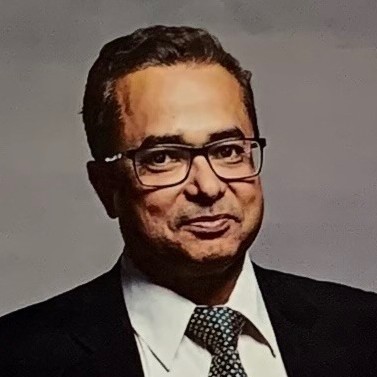

- 12 30 PM
Surface Screening and Stakeholder Engagement – The Secrets to CCS Success
Carbon Capture and Storage (CCS) is an essential technology to achieve volumetrically significant, near-term emissions reduction of energy systems and other hard-to-abate industries. Much focus is...
Sponsored by : Enbridge
 Enbridge Knowledge Bar
Enbridge Knowledge Bar 12:30 PM - 1:30 PM
12:30 PM - 1:30 PM
Surface Screening and Stakeholder Engagement – The Secrets to CCS Success
 12:30 PM - 1:30 PM
12:30 PM - 1:30 PM Enbridge Knowledge Bar
Enbridge Knowledge Bar
Carbon Capture and Storage (CCS) is an essential technology to achieve volumetrically significant, near-term emissions reduction of energy systems and other hard-to-abate industries. Much focus is placed on subsurface suitability, as key technical risks and project economics are known to be strongly associated with reservoir characterization and selection. However, the importance of surface screening and stakeholder engagement should not be underestimated. In Alberta, the multi-step approval process for CCS hubs begins with identification of a large evaluation area. Through the Request for Full Project Proposals (RFPP) process, project proponents are granted the opportunity to explore across the evaluation permit area and obtain well data to quantify and qualify the subsurface storage volume. This subsurface de-risking process and the subsequent monitoring, measurement and verification (MMV) principles to evaluate sequestration performance are defined by the government who ultimately determines subsurface feasibility and grants carbon sequestration tenure. In contrast, surface screening to identify appropriate sites for positioning the facilities and infrastructure needed to support CCS are largely left to the project proponent to negotiate with local landowners, Indigenous communities, and other potentially impacted stakeholders. Surface screening is critical for determining optimal flowline and pipeline routes, positioning of compressor stations, as well as the siting of injection and MMV wells. Non-ideal placement of any or all of these components can significantly increase both CAPEX and OPEX costs. Project delays and resulting cost escalation can be triggered by possible environmental impact assessments and cumulative effects considerations. Additionally, responding to public apprehension regarding alleged social and environmental impacts could require a significant commitment to public education and outreach. A case study of the Navigator CO2 Ventures’ Heartland Greenway project in the US Midwest will demonstrate the importance of upfront surface screening and ultimate surface sites selection to overall CCS project success. There are many similarities between Heartland Greenway and numerous proposed Alberta CCS projects. Several important components of this notable CCS project were in place. Industrial emitters were interested in decarbonization opportunities and were willing to commit emissions volumes to the project. A known and tested sequestration reservoir target was identified and the pore space was available for project use. BlackRock and others had invested in the project. US Government incentives were available to improve project economics. Regardless of these significant milestones, in October 2023, Navigator withdrew their sequestration permit application and subsequently cancelled their pipeline project. This presentation will review the importance of surface screening and stakeholder engagement in CCS project design. The link between these proactive activities and project risk mitigation, economic viability, and community and Indigenous acceptance will be discussed in an effort to improve future CCS project outcomes.

- 12 30 PM
Multi-Technology Imaging for Efficient & Effective MMV Plans
Carbon Capture & Storage is rapidly scaling in North America and worldwide to help meet global goals for reduction in CO2 emissions. Every CCS project requires the operator’s commitment to monitor,...
Sponsored by : Pathways Alliance
 Pathways Alliance Knowledge Bar
Pathways Alliance Knowledge Bar 12:30 PM - 1:30 PM
12:30 PM - 1:30 PM
Multi-Technology Imaging for Efficient & Effective MMV Plans
 12:30 PM - 1:30 PM
12:30 PM - 1:30 PM Pathways Alliance Knowledge Bar
Pathways Alliance Knowledge Bar
Carbon Capture & Storage is rapidly scaling in North America and worldwide to help meet global goals for reduction in CO2 emissions. Every CCS project requires the operator’s commitment to monitor, measure and verify (MMV) the injected subsurface volume of CO2. In general, monitoring and detection should provide information as close to the injection reservoir as possible to identify any unexpected behaviour as early as possible. Effective and strategic use of subsurface technologies is needed to minimize operating costs. Various methods have been proposed for monitoring CO2 plume containment and conformation both from the surface and within the wellbore. However, not all technologies will work for all types of reservoirs and care must be taken to ensure the right technologies are deployed. Additionally, prior to finalizing the location of injection and monitoring wells, a full understanding of the subsurface is required to identify any potential leakage issues such as faults or variations in reservoir properties. This can be accomplished by acquiring different types of baseline measurements such as passive and active seismic which can help establish the pre-injection, base-line subsurface interpretation. In this talk we will focus on passive, borehole, and surface seismic technologies;examining how these technologies can be deployed both for baseline measurements and in a staged investigation approach to enable accurate, yet cost-effective ongoing monitoring. Examples from microseismic and vertical seismic profiling (VSP) studies will be shared along with methods for optimizing baseline measurement programs such conventional 3D or alternative surface seismic. Methods that can provide both accurate 3D subsurface images as well as reduce the overall surface footprint (and cost) of these MMV programs will be reviewed including results from the recent award-winning EcoSeis™ project (winner of the 2024 Global Energy Show Collaborative Trendsetter award). This project has shown that it is possible to safely and efficiently acquire baseline seismic with up to a 50% reduction in environmental impact while achieving the same high-resolution subsurface image. Results from the project will be shared including new learnings for cost effective, environmentally sustainable, 4D timelapse seismic. Additionally, the talk will provide an overview of the upcoming Carbon Capture Collaboration Project, which will evaluate various technologies by gathering datasets simultaneously and comparing them in various combinations to identify the most efficient and effective approach for CCS measurement, monitoring, and verification.

- 12 30 PM
Recent Challenges in CCS Communications
In 2022, I presented at the Knowledge Bar about the importance of effective public and stakeholder engagement for CCS projects. At that time, the numbers of CCS projects in development had not yet...
Sponsored by : Capital Power
 Capital Power Knowledge Bar
Capital Power Knowledge Bar 12:30 PM - 1:30 PM
12:30 PM - 1:30 PM
Recent Challenges in CCS Communications
 12:30 PM - 1:30 PM
12:30 PM - 1:30 PM Capital Power Knowledge Bar
Capital Power Knowledge Bar
In 2022, I presented at the Knowledge Bar about the importance of effective public and stakeholder engagement for CCS projects. At that time, the numbers of CCS projects in development had not yet escalated as they have in Alberta and Saskatchewan – indeed to other parts of Canada like Manitoba, BC and Ontario. What challenges have this increase in planned projects caused in terms of public outreach and communications? Some project have multiple players, with hub managers offering several CO2 suppliers injection locations. The technical challenges, alone, from large projects injecting close to each other raises different risk concerns from communities that must be addressed. This presentation will look at the evolution of CCS communications – both internal to projects and external to variable audiences. Recent criticisms of CCS by media outlets – often pointedly against the whole idea of it as an emissions reduction strategy – has been exacerbated by events like the recent safety failure at the Denbury CO2 pipeline in Sartartia Mississippi. What have we learned about public communications challenges in the past three years as CCS has geared up in both the US and Canada? This presentation will look at some of the new CCS outreach challenges, how to address them, and when is a project conceivable or acceptable to a community, and when is it not.

- 1 30 PM
Compressed Air Systems 101
COMPRESSED AIR SYSTEMS 101 • Introductions & Wiseworth Ingersoll Rand info • Considerations for Instrument Air Requirements (overview) • Air Compressor Choices & Controls • Control (wet)...
Sponsored by : Worley
 Worley Knowledge Bar
Worley Knowledge Bar 1:30 PM - 2:30 PM
1:30 PM - 2:30 PM
Compressed Air Systems 101
 1:30 PM - 2:30 PM
1:30 PM - 2:30 PM Worley Knowledge Bar
Worley Knowledge Bar
COMPRESSED AIR SYSTEMS 101 • Introductions & Wiseworth Ingersoll Rand info • Considerations for Instrument Air Requirements (overview) • Air Compressor Choices & Controls • Control (wet) Air Receiver Selection • Air Dryer Selection and Considerations • Filtration Selection and Considerations • Dry Air Receiver Selection This is a very fundamental presentation which serves as a good refresher for senior technical personnel and as a good start for junior technical positions. While it is a fundamental presentation there is still an allowance for technical questions.

- 1 30 PM
Bridging the Gap: Leveraging Lessons from Conventional Sites for Resilient Corrosion, Integrity, and Sustainability Management in Carbon Capture Projects
In the journey towards sustainable carbon capture, invaluable lessons gleaned from conventional sites illuminate the path towards robust corrosion, integrity, and sustainability management. This pa...
Sponsored by : Enbridge
 Enbridge Knowledge Bar
Enbridge Knowledge Bar 1:30 PM - 2:30 PM
1:30 PM - 2:30 PM
Bridging the Gap: Leveraging Lessons from Conventional Sites for Resilient Corrosion, Integrity, and Sustainability Management in Carbon Capture Projects
 1:30 PM - 2:30 PM
1:30 PM - 2:30 PM Enbridge Knowledge Bar
Enbridge Knowledge Bar
In the journey towards sustainable carbon capture, invaluable lessons gleaned from conventional sites illuminate the path towards robust corrosion, integrity, and sustainability management. This paper embarks on a journey to explore the symbiotic relationship between these lessons and the imperatives of carbon capture operations. By dissecting the three primary challenges—efficiency, externality, and circularity—within the context of both conventional and carbon capture sites, it elucidates actionable solutions poised to drive long-term efficiency and sustainability in carbon capture endeavors. Central to this discourse are the foundational concepts of designing for purpose, maintaining integrity throughout the lifecycle, and decommissioning with a strategic focus on second-life utilization. These principles, honed through decades of experience in conventional industries, stand as testament to their applicability and relevance in the realm of carbon capture. By embracing and integrating these principles into carbon capture projects, organizations can circumvent pitfalls, mitigate risks, and foster a culture of sustainability. Moreover, the paper issues a clarion call to eschew the repetition of past mistakes, urging stakeholders to glean wisdom from the annals of history. The cost of repeating errors, as evidenced by catastrophic incidents and staggering economic repercussions, underscores the imperative of learning from, rather than perpetuating, missteps. Harnessing the collective wisdom of conventional sites offers a beacon of hope—a roadmap towards a future where carbon capture projects thrive in harmony with environmental stewardship. In essence, this paper serves as a catalyst for change, advocating for a paradigm shift in the approach to corrosion, integrity, and sustainability management in carbon capture. It underscores the imperative of embracing past lessons, seizing opportunities for innovation, and forging a path towards a more resilient and sustainable future. Keywords: Carbon Capture, Conventional Sites, Lessons Learned, Corrosion Management, Integrity, Sustainability, Efficiency, Circular Economy, Second-life Utilization.

- 1 30 PM
Pathways Proposed CO2 Transportation Network and Storage Hub Project
Sponsored by : Pathways Alliance
 Pathways Alliance Knowledge Bar
Pathways Alliance Knowledge Bar 1:30 PM - 2:30 PM
1:30 PM - 2:30 PM

- 1 30 PM
Accelerating Towards Net-Zero: Empowering Energy Sustainability and CCUS Systems with Simulation-Based Digital Twins
In today's rapidly evolving energy landscape, the integration of AI/ML and digital twin technologies has become imperative for the sector's sustainable growth and efficiency, extending to innovatio...
Sponsored by : Capital Power
 Capital Power Knowledge Bar
Capital Power Knowledge Bar 1:30 PM - 2:30 PM
1:30 PM - 2:30 PM
Accelerating Towards Net-Zero: Empowering Energy Sustainability and CCUS Systems with Simulation-Based Digital Twins
 1:30 PM - 2:30 PM
1:30 PM - 2:30 PM Capital Power Knowledge Bar
Capital Power Knowledge Bar
In today's rapidly evolving energy landscape, the integration of AI/ML and digital twin technologies has become imperative for the sector's sustainable growth and efficiency, extending to innovations in carbon capture, utilization, and storage (CCUS) processes. Physic based Digital twin technology, integrating high fidelity 3D physics-based simulations combined with machine learning (ML) analytics, offers a transformative approach in real-time systems analysis, facilitating predictive maintenance scheduling and performance optimization. At the core digital twin technology lies the integration of physics-based simulations with real-time data from physical assets, enabling a virtual replica of the system's behavior. This presentation explores the intersection of energy industry with simulation-based digital twin technology, emphasizing the pivotal role of AI/ML in shaping energy industry’s future and helping it in achieving the net-zero goals. The presentation delves into the utilization of simulation-based digital twins in optimizing of an example of CCUS process to illustrate the transformative potential of such technology in this field. In the context of CCUS, physics-based digital twin entails capturing the intricate fluid dynamics within capture units, utilization reactors, and storage reservoirs through CFD simulations. By modeling multiphase flow, reaction kinetics, digital twins provide insights into system behavior and facilitate optimization of CCUS efficiency. It can also include FEA analysis to assess the structural integrity and durability of CCUS infrastructure, such as storage vessels and pipelines. The workflow encompasses compressing detailed 3D models into lightweight Reduced Order Models (ROM) that extends the digital twin's utility, allowing seamless integration into system-level models including raw sensors data, engineering knowledge, in house codes, 0D 1D libraries, which can be hosted on IoT platforms. These enhanced twins, not only offer insights into equipment performance and risk management beyond raw data but also empower field personnel to understand failure root causes, thus optimizing operations, maintenance, and reducing downtime by physics-based decision-making. Application of a validated 3D ROM of carbon capture unit and its accuracy compared with high fidelity CFD simulation will be available to audience during the conference presentation. Also, the connection of 3D ROM to the absorption-based carbon capture top-down system level digital twin will provide a holistic view of such technologies. System architecture includes various components including absorbers, desorbers, pumps, compressors, heat exchangers, and piping, each characterized by relevant curves or equations to capture their physics. Finally, this presentation exploring other applications in the energy sectors will clarify the architecture of digital twins facilitated by Hybrid Analytics capability of Ansys. This provides insight into how hybrid digital twins can improve the efficiency, reliability through informed decision-making in the design and by optimization of system performance while minimizing energy consumption and operational costs.

- 2 30 PM
Over-Simplification of Subsurface Plume Modeling: A Cautionary Tale
This presentation reviews our experience with a recent lawsuit regarding subsurface migration of an acid gas plume (roughly 2/3 CO2, 1/3 H2S). In this case, plume migration outside of an operator'...
Sponsored by : Worley
 Worley Knowledge Bar
Worley Knowledge Bar 2:30 PM - 3:30 PM
2:30 PM - 3:30 PM
Over-Simplification of Subsurface Plume Modeling: A Cautionary Tale
 2:30 PM - 3:30 PM
2:30 PM - 3:30 PM Worley Knowledge Bar
Worley Knowledge Bar
This presentation reviews our experience with a recent lawsuit regarding subsurface migration of an acid gas plume (roughly 2/3 CO2, 1/3 H2S). In this case, plume migration outside of an operator's predictions, based on an over-simplified geologic model, ultimately led to tens of millions of dollars in damages awarded to the plaintiff in the case. We will begin with an overview of the specifics of the case that are now publicly available (e.g. location, geology, development history). We will describe the modeling work undertaken by the various parties, and illustrate the pitfalls associated with some of the modeling choices taken by the defendant – but also discuss some of the potential incentives to simplify modeling and describe cases where it may be appropriate. We will conclude with the ultimate financial consequences and draw key takeaways that are applicable to the broader CCS industry as it scales up.

- 2 30 PM
Workflow for CCS Subsurface Evaluation
Moving towards a sustainable future entails navigating new territories, necessitating systematic planning, meticulous evaluations, and innovative approaches. In the realm of carbon capture and stor...
Sponsored by : Enbridge
 Enbridge Knowledge Bar
Enbridge Knowledge Bar 2:30 PM - 3:30 PM
2:30 PM - 3:30 PM
Workflow for CCS Subsurface Evaluation
 2:30 PM - 3:30 PM
2:30 PM - 3:30 PM Enbridge Knowledge Bar
Enbridge Knowledge Bar
Moving towards a sustainable future entails navigating new territories, necessitating systematic planning, meticulous evaluations, and innovative approaches. In the realm of carbon capture and storage (CCS), assessing subsurface storage and containment is vital to meet three fundamental requirements: capacity, injectivity, and containment. Risks such as CO2 leakage, induced seismicity, and related environmental, health and safety concerns emphasize the need for rigorous evaluation methodologies. Our evaluation workflow aligns with and incorporates principles from the CSA Z741 standard for Geological Storage of Carbon Dioxide, ISO 27914 standard for Carbon Dioxide Capture, Transportation and Geological storage and the US Department of Energy NRAP Recommended Practices for Containment Assurance and Leakage Risk. This structured approach comprises five phases: Geological Studies (Site Screening & Selection), In-situ Reservoir Testing, Site Characterization, Containment Studies, and Computer Modelling. During site screening and selection, prospective sites are identified and evaluated to determine the most promising candidates for further assessment. It incorporates geological evaluation, land use considerations, analysis of existing data, and basic geomodelling. Subsequently, in-situ reservoir tests offer valuable insights into formation permeability, continuity, boundaries and connectivity. Site characterization entails analysis of the geology, geochemistry, and geomechanics of the storage formation and the caprocks, as well as any existing wells. Further containment studies, including in-situ testing or geotechnical lab testing, are essential to assess seal integrity and migration pathways. As part of a comprehensive site characterization, various models are developed to simulate different aspects of the subsurface system. These include geological static models, reservoir models, geochemical models, and geomechanical models. The models will rely on actual test data as inputs to reduce uncertainty and are designed to predict CO2 movement, assess containment integrity, and evaluate potential risks such as induced seismicity. The workflow is iterative, continuously refined with new data to ensure long-term containment and safety. By incorporating robust evaluation methodologies, this workflow contributes to the success and sustainability of CCS initiatives, facilitating the transition to a low-carbon future.

- 2 30 PM
Carbon Capture Feasibility from Compressor Exhaust Streams
The North American energy industry has made strides in capturing CO2 from relatively pure streams, yet the daunting challenge that looms large is extracting CO2 from combustion sources—a task that...
Sponsored by : Pathways Alliance
 Pathways Alliance Knowledge Bar
Pathways Alliance Knowledge Bar 2:30 PM - 3:30 PM
2:30 PM - 3:30 PM
Carbon Capture Feasibility from Compressor Exhaust Streams
 2:30 PM - 3:30 PM
2:30 PM - 3:30 PM Pathways Alliance Knowledge Bar
Pathways Alliance Knowledge Bar
The North American energy industry has made strides in capturing CO2 from relatively pure streams, yet the daunting challenge that looms large is extracting CO2 from combustion sources—a task that is both critical and complex. This presentation zeroes in on this emerging challenge, particularly addressing midstream operators who navigate a broad landscape of opportunities in compression engines. Through a methodical evaluation, CANUSA EPC scrutinizes three different flow rates in an existing compressor station design, employing the widely used Caterpillar engines as a standard. The study delves deep into solvent amine systems, celebrated for their proven compatibility with these engines, anchoring the analysis in practical, real-world scenarios. The eye-opening findings of the analysis show that achieving the capture and compression of CO2 for offtake necessitates a pricing of $164 per ton (USD). However, juxtaposed against current market forecasts, which do not anticipate CO2 pricing to hit this mark until post-2030, questions about the immediate viability of such projects come to the fore. We discuss processing, deployment considerations, and a nuanced showcase of how technology influences cost. This presentation sheds light on the intricate economics of CO2 capture, especially from compressor station engine exhaust, highlighting the influence of factors like CO2 pricing, net CO2 captured, and existing infrastructure on the feasibility of these initiatives.

- 2 30 PM
CO2 Capture and Management Solutions
As many operators explore the potential to capture, sequester, and utilize CO2 from their facilities, some are realizing the complexity of developing those projects from a technical, economic, exec...
Sponsored by : Capital Power
 Capital Power Knowledge Bar
Capital Power Knowledge Bar 2:30 PM - 3:30 PM
2:30 PM - 3:30 PM
CO2 Capture and Management Solutions
 2:30 PM - 3:30 PM
2:30 PM - 3:30 PM Capital Power Knowledge Bar
Capital Power Knowledge Bar
As many operators explore the potential to capture, sequester, and utilize CO2 from their facilities, some are realizing the complexity of developing those projects from a technical, economic, execution, and permitting perspective. This presentation will focus on the process steps typically required from the moment of CO2 generation to its eventual sequestration or utilization, including challenges, solutions, and industrial project experience. Axens has a full range of CO2 solutions including CO2 capture, dehydration, purification, DeNOx, and DeOx, which can be deployed in pre and post-combustion scenarios. Additionally, as operators explore syngas utilization opportunities, we will explore the various processing options to purify syngas for use in Fischer-Tropsch or other conversion technologies. We will also share updates after ~2 years of operation at our post-combustion CO2 capture demonstration plant located in Dunkirk, France.
